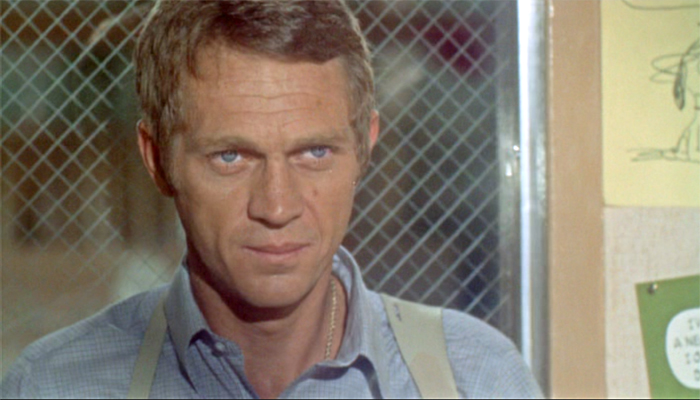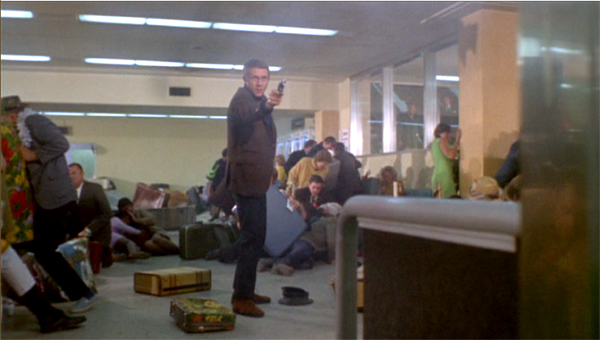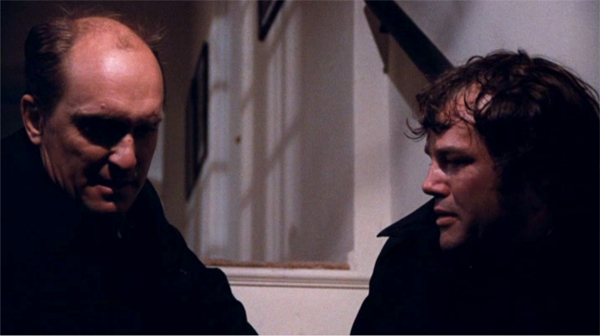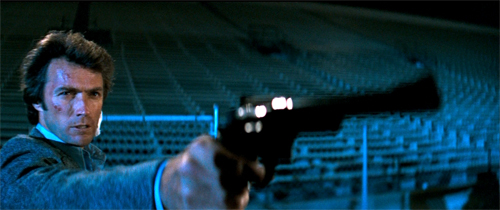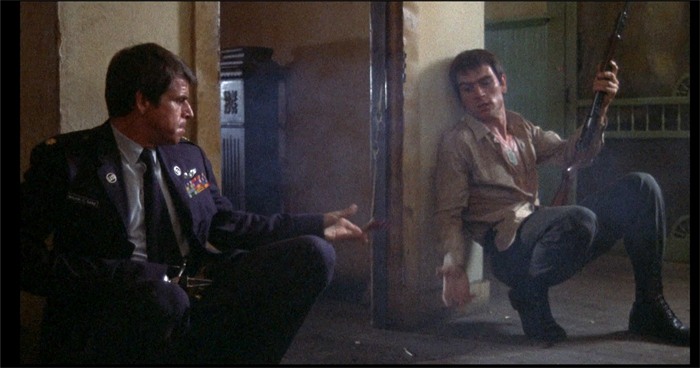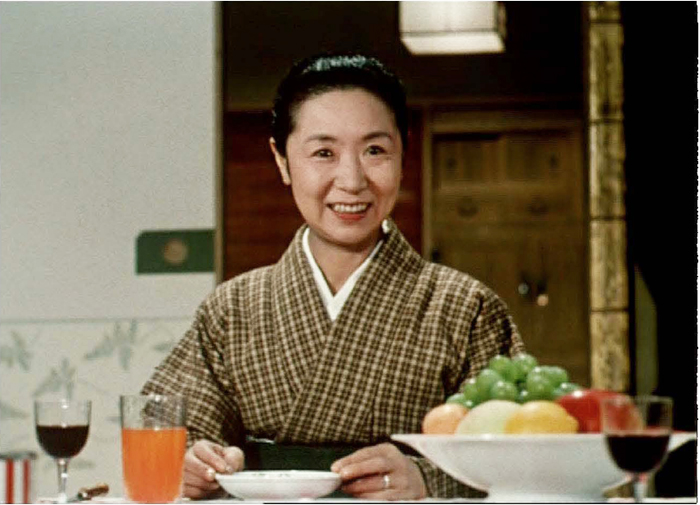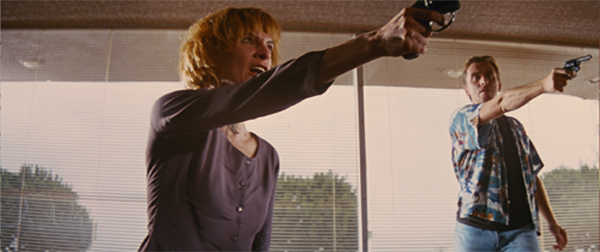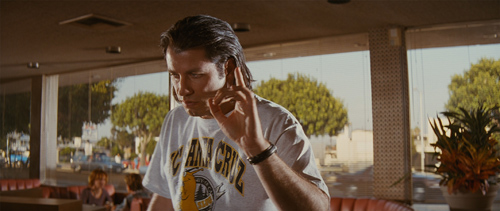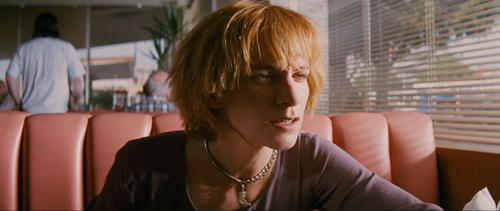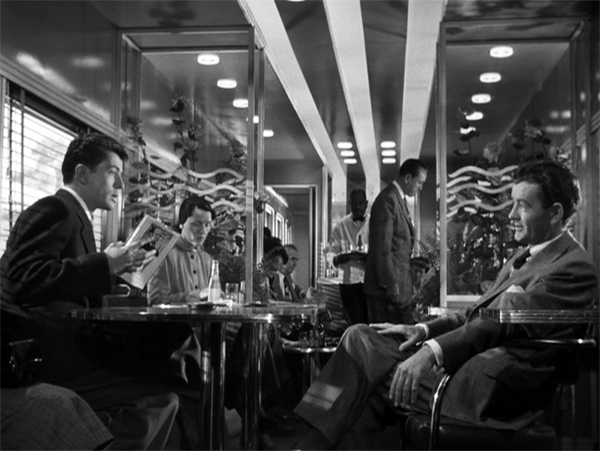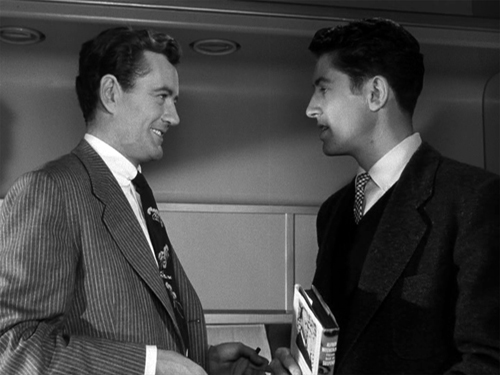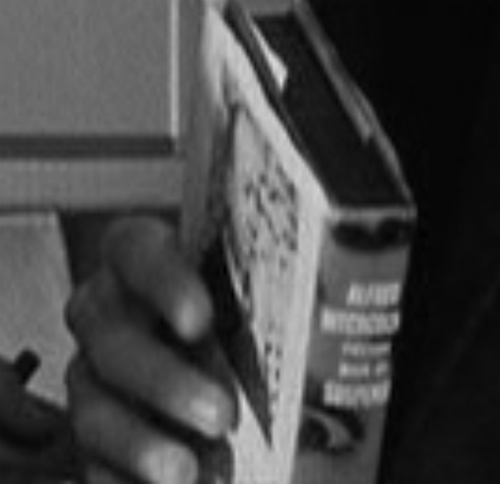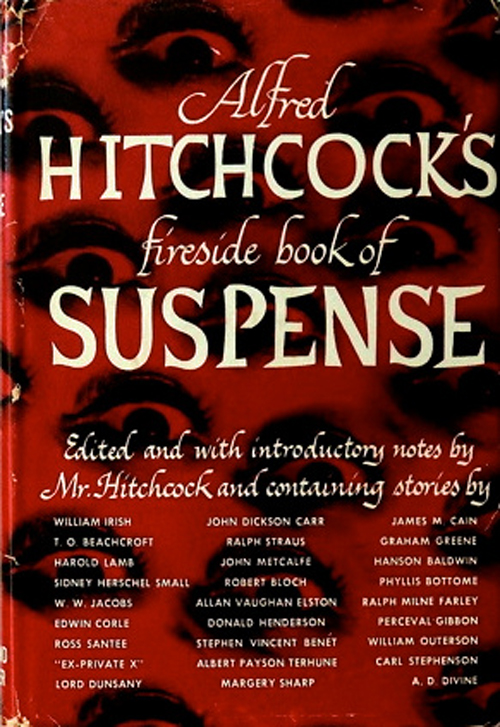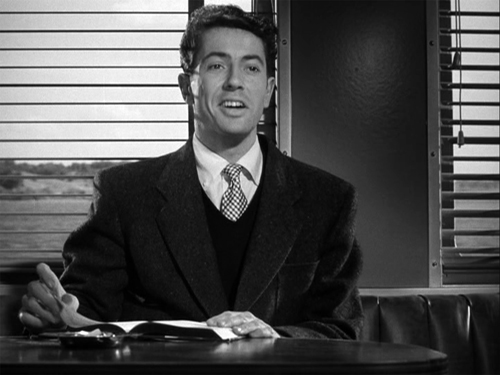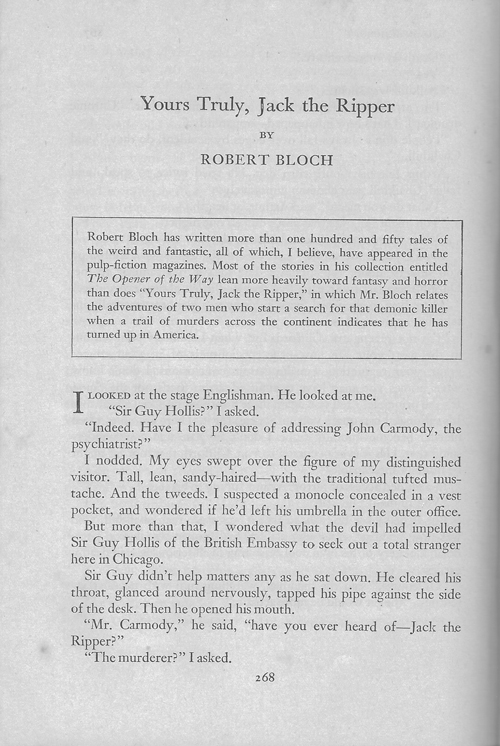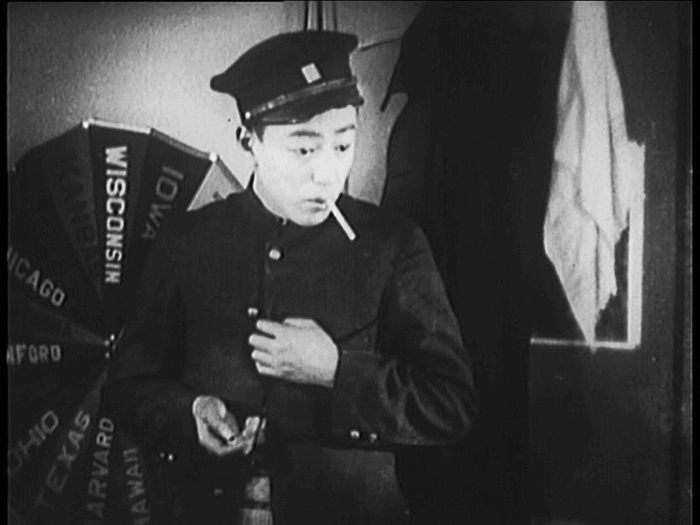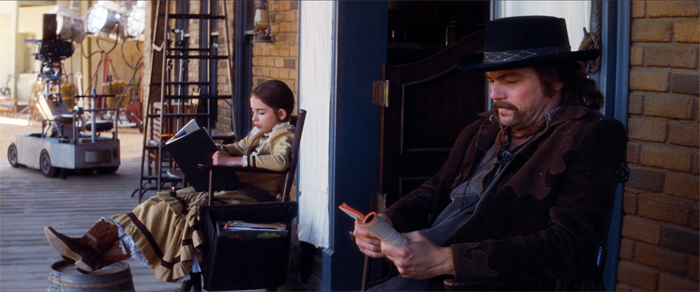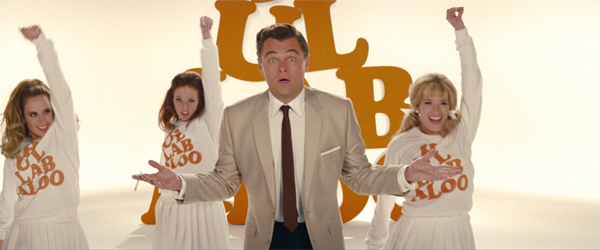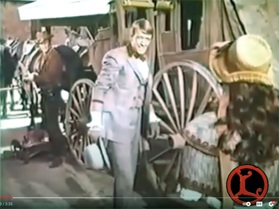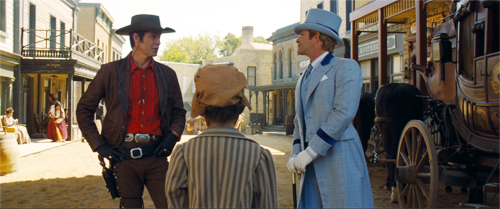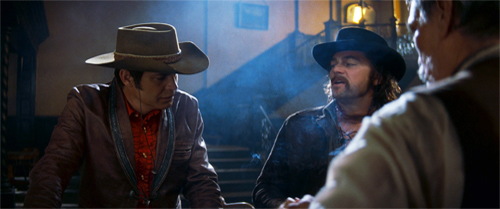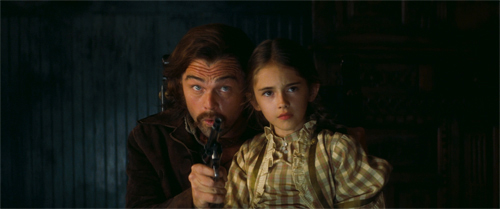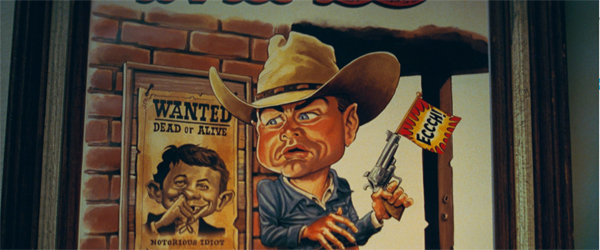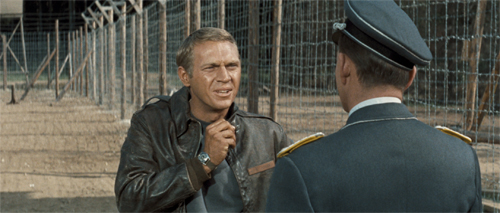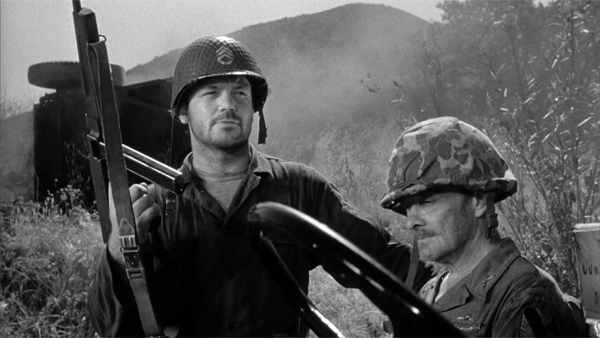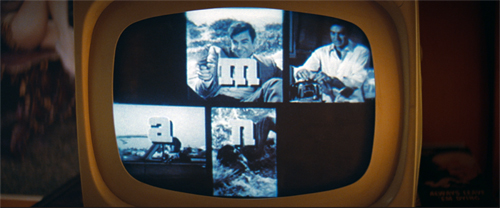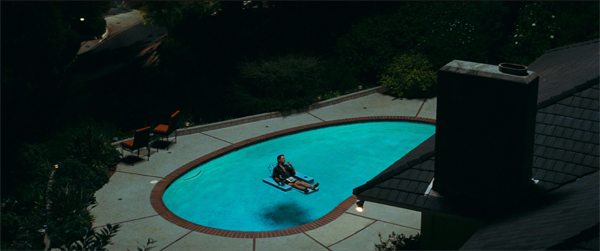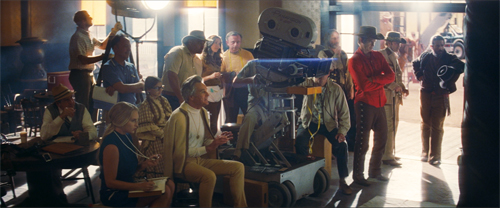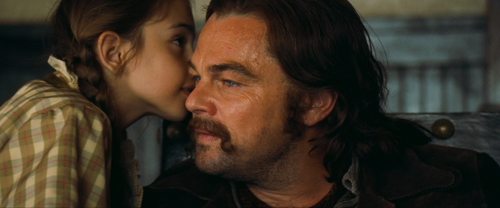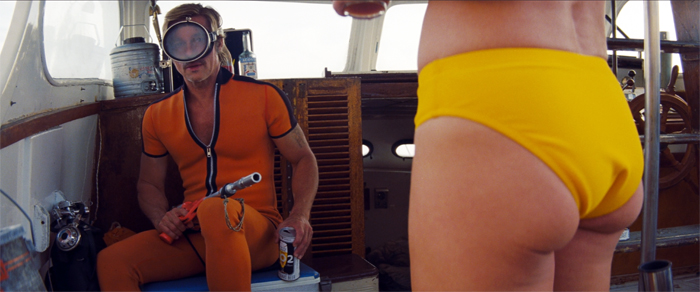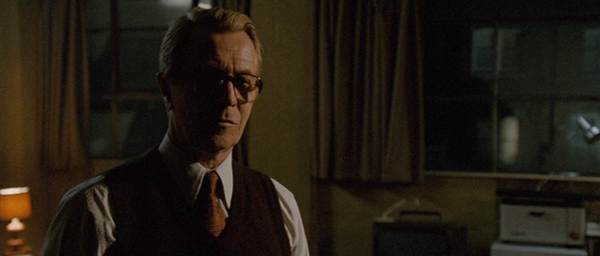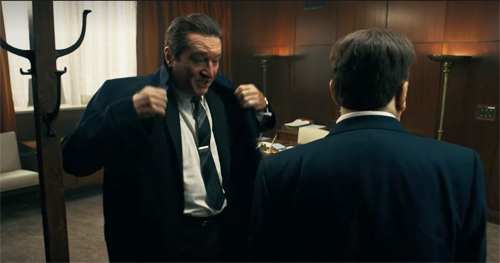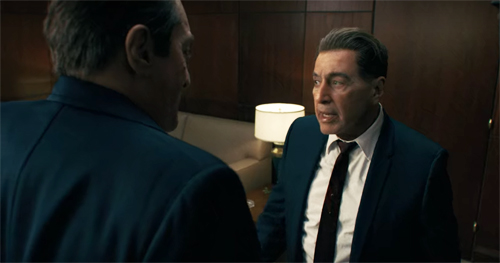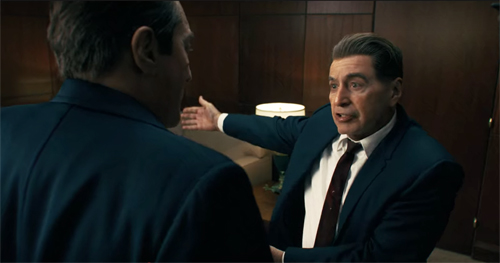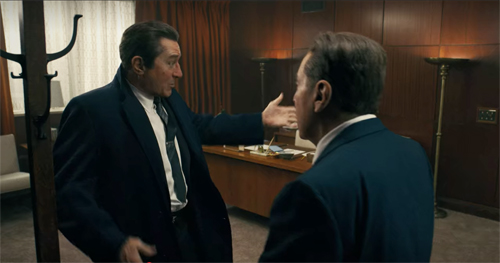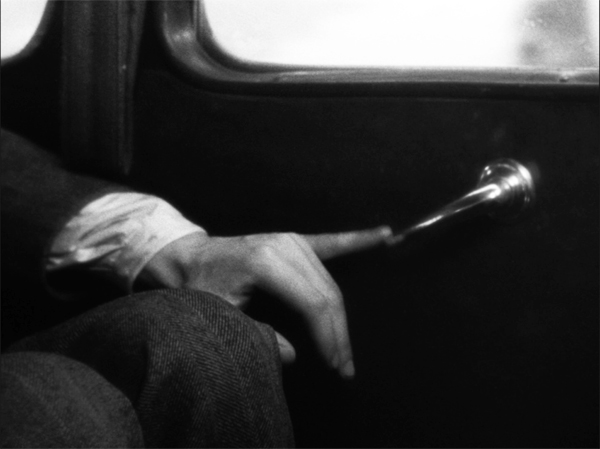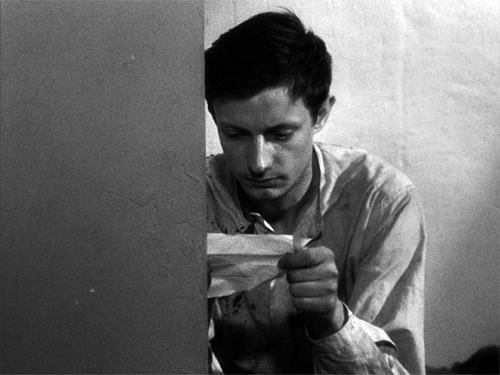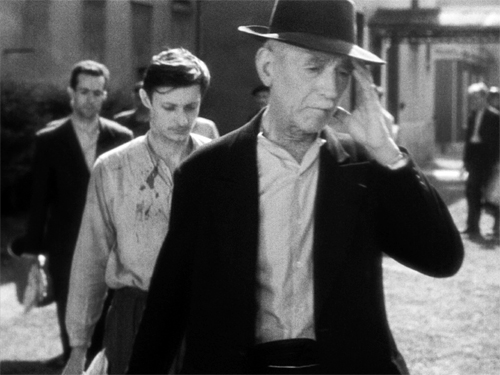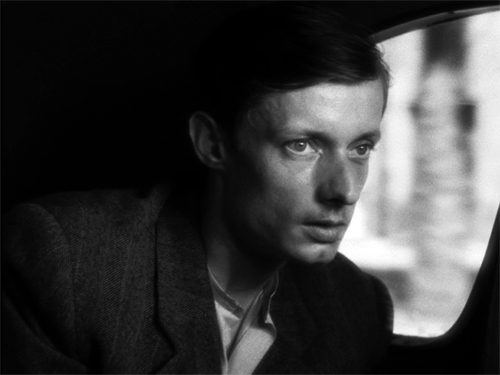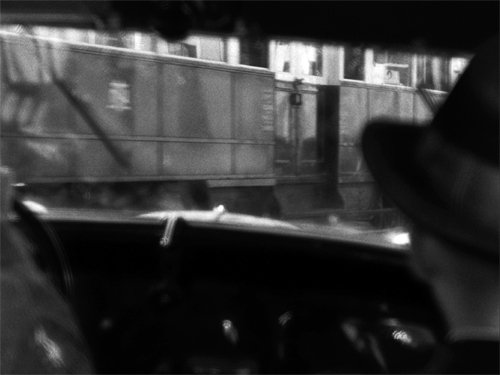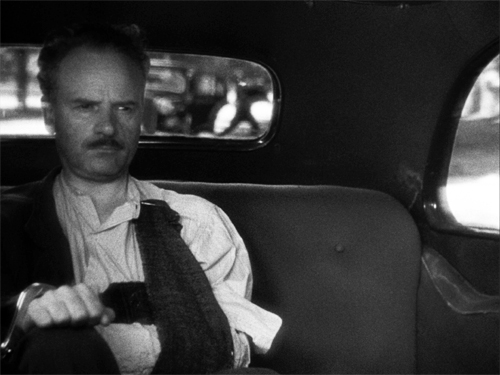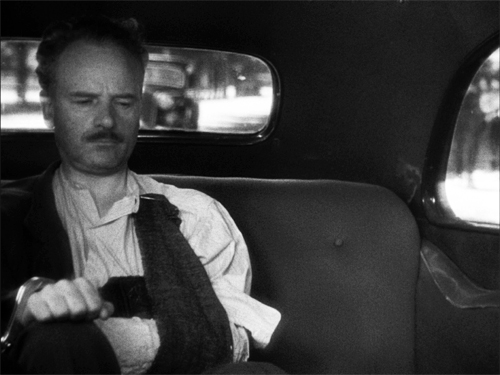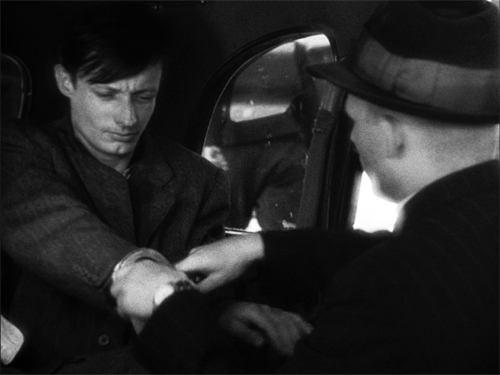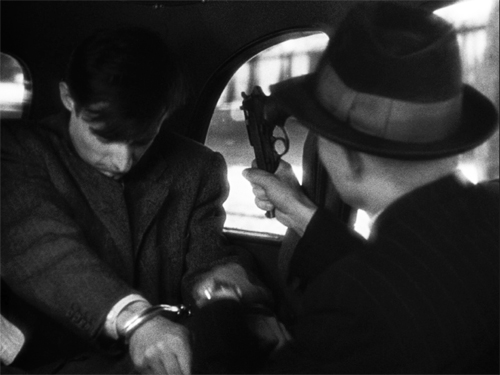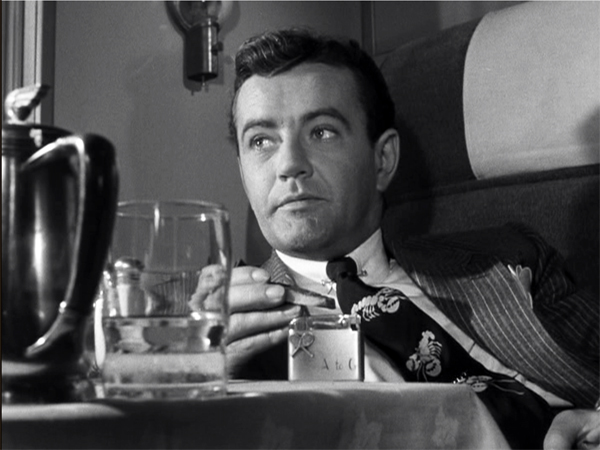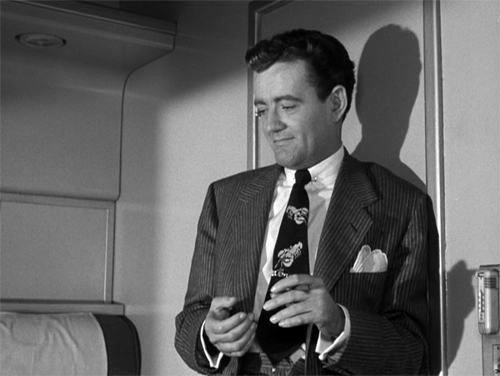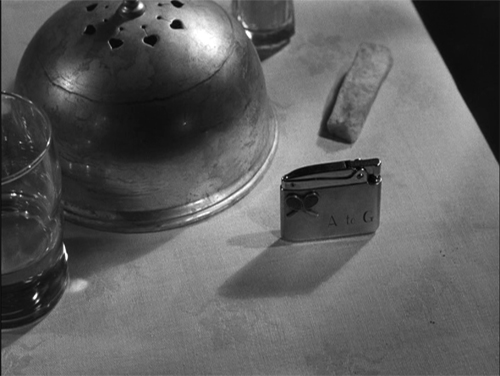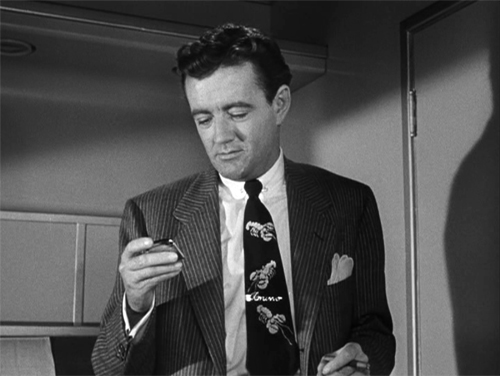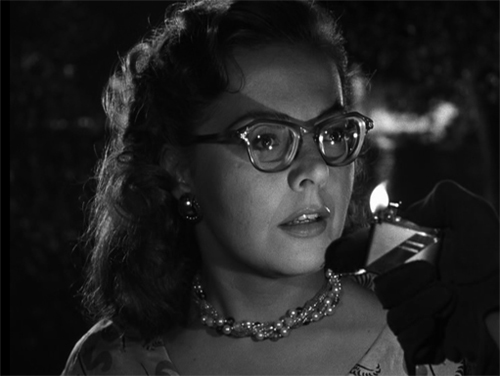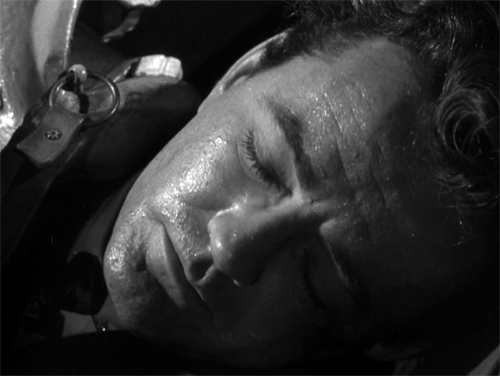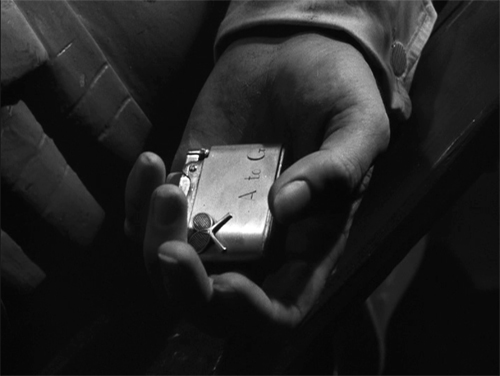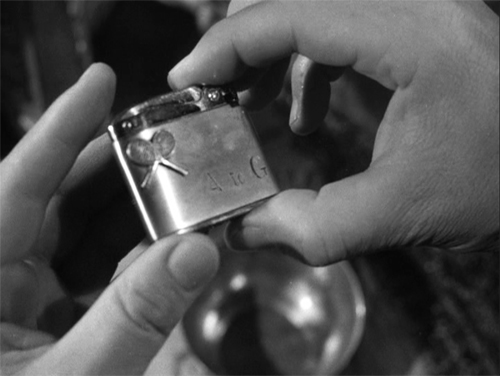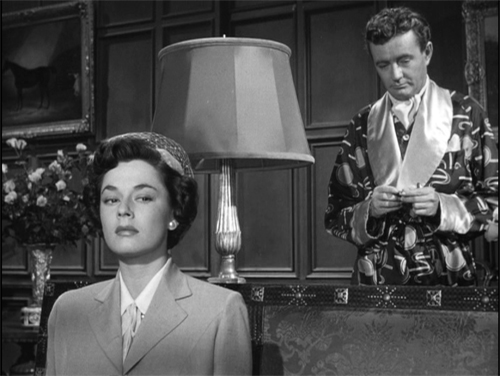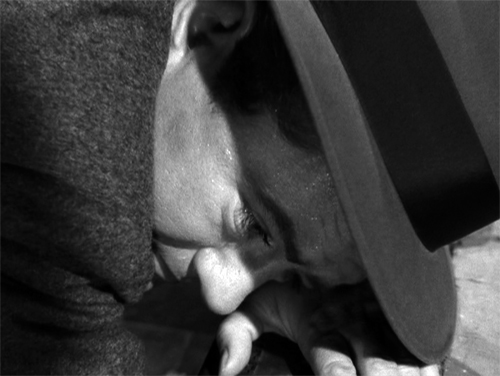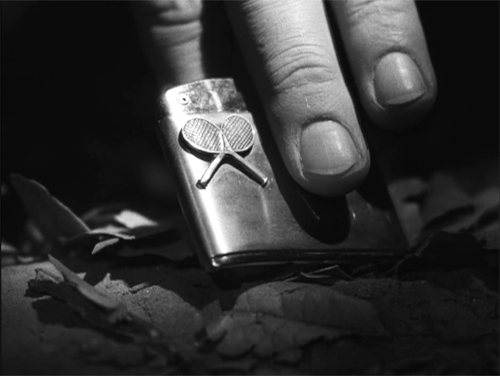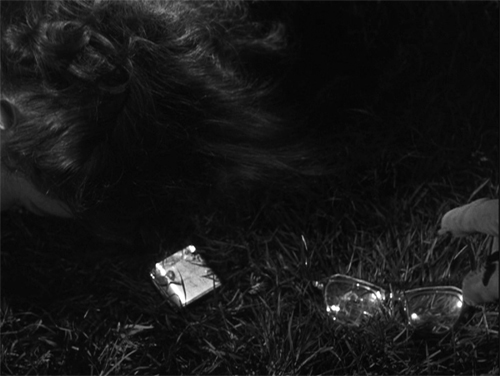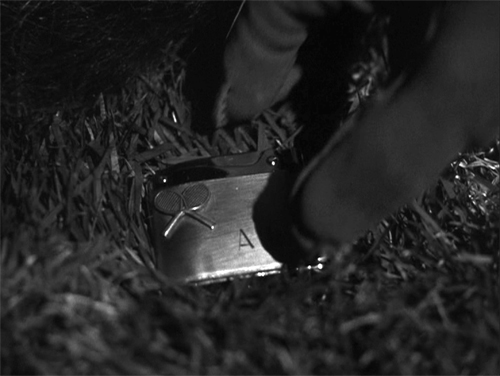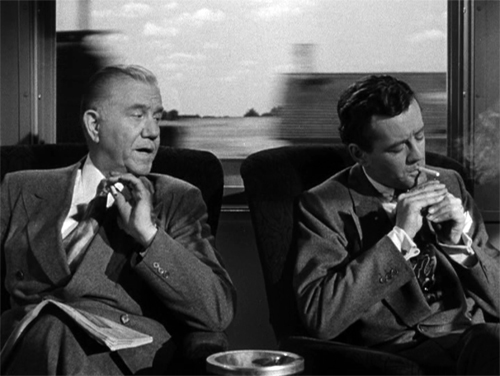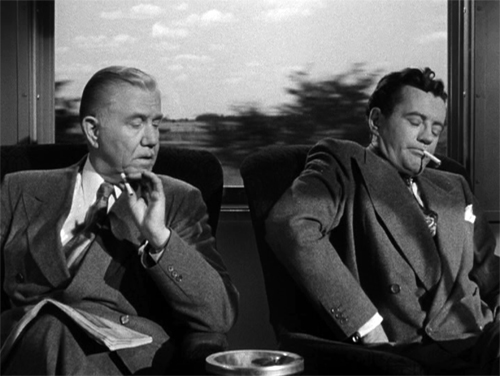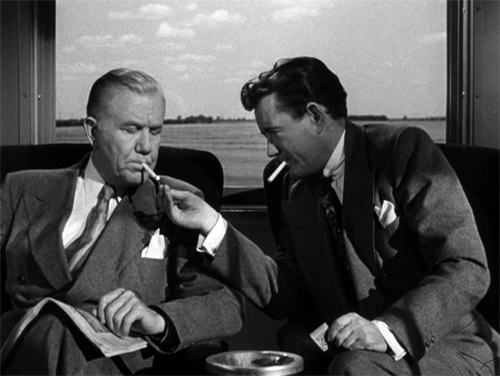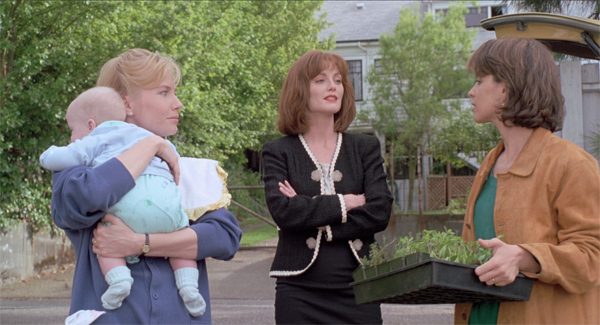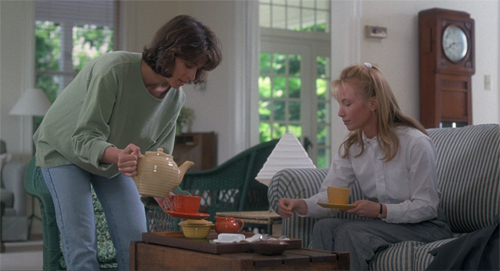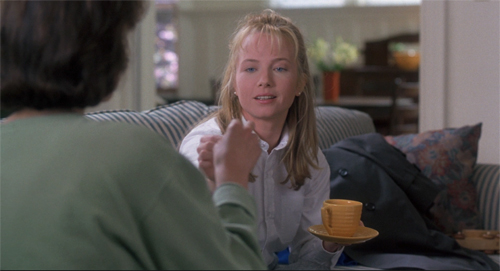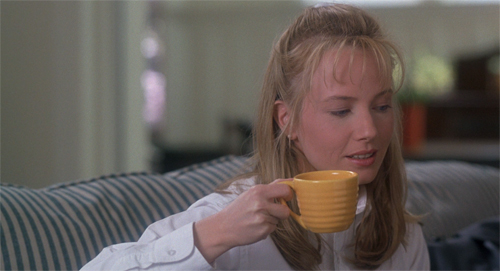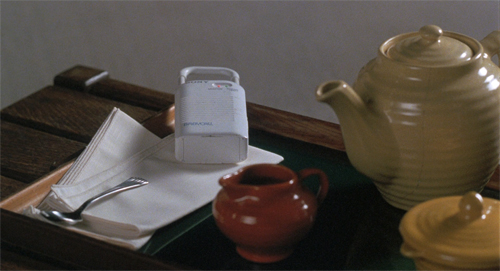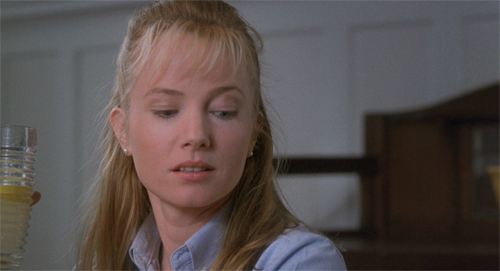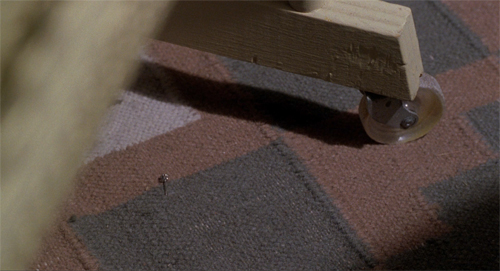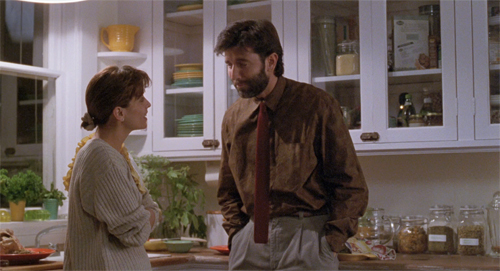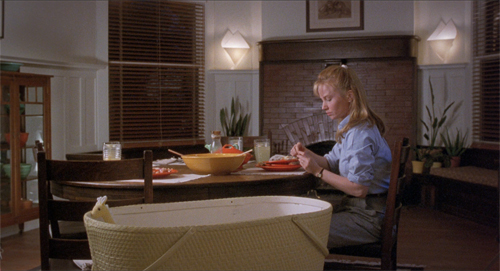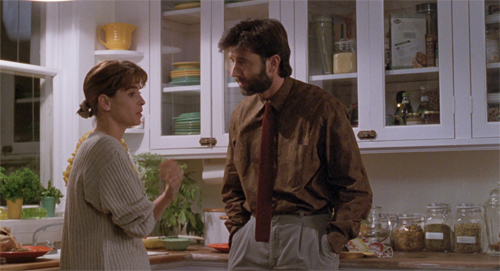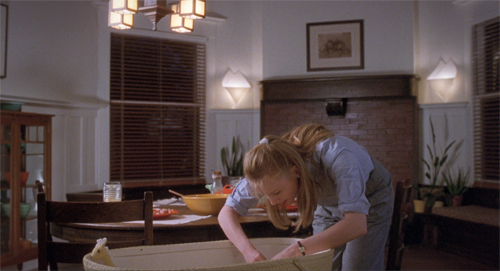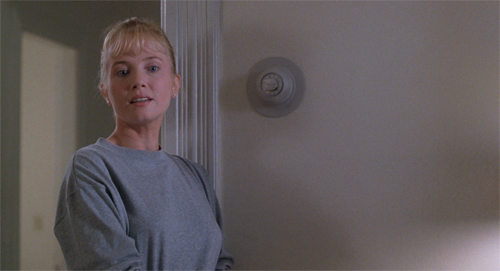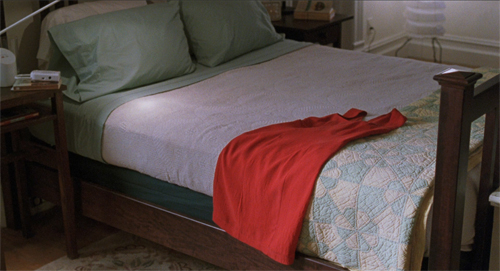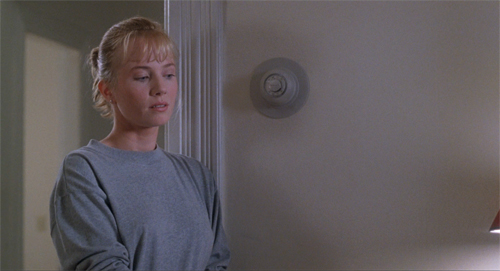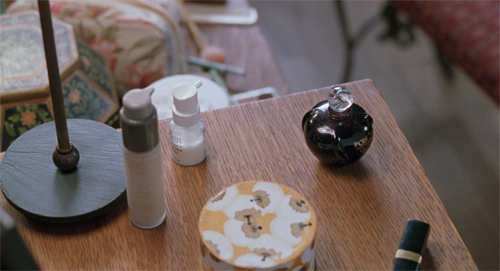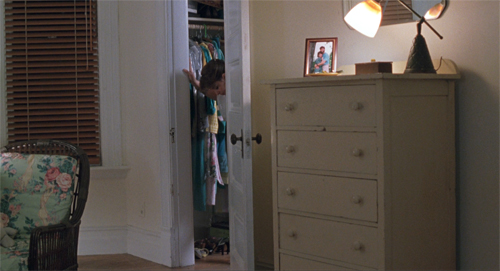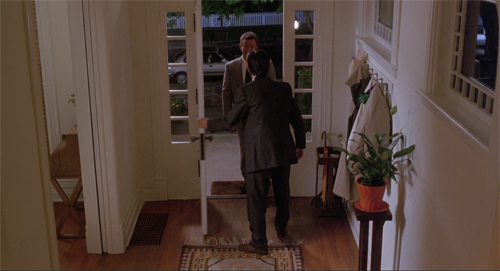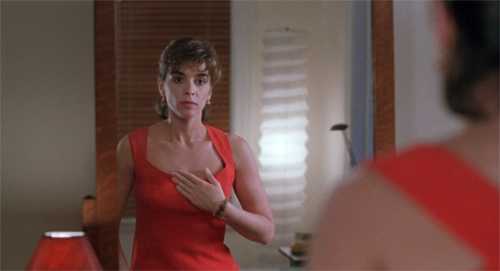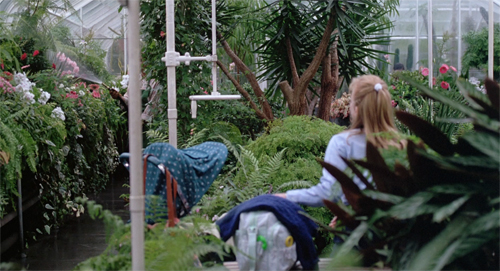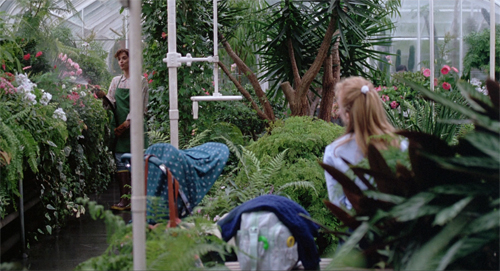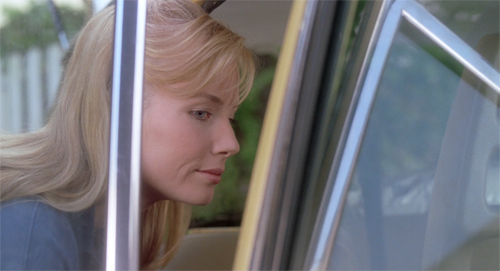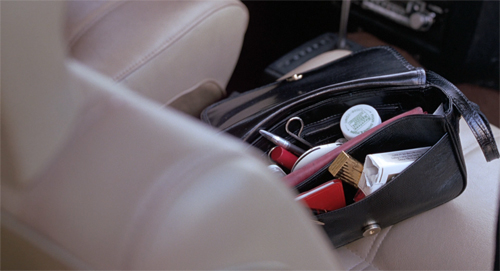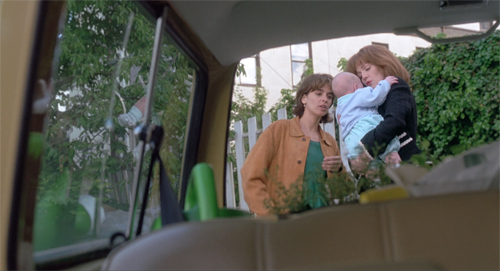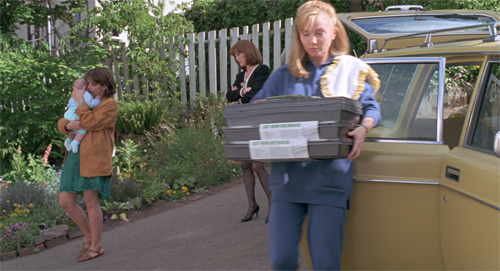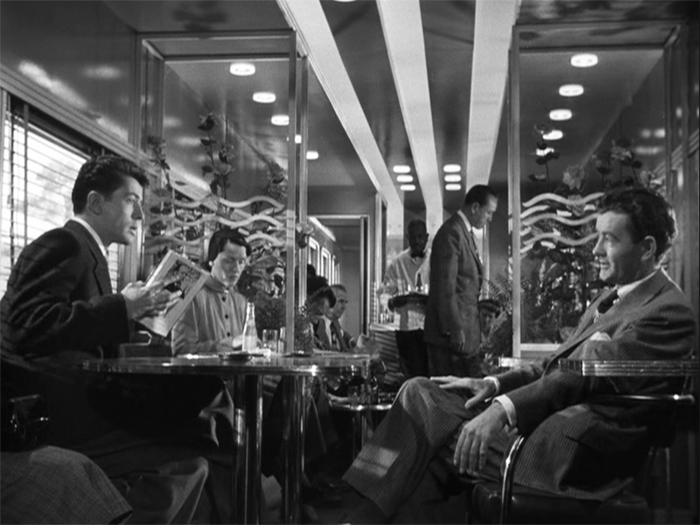Archive for the 'Directors: Tarantino' Category
Tarantino and the criticism of enthusiasm
Bullitt (1968).
DB here:
Critics who are carried away by a film want to share their excitement. Thus is born what the Cahiers du cinéma writers called a criticism of enthusiasm. The magazine’s editors suggested that the critic who most admired the film should write about it, on the premise that he (almost always a he) would make the best case for it.
Quentin Tarantino’s new book Cinema Speculation (HarperCollins) is a stirring instance of this mode. Fueled by the motormouth intensity of his interviews and the monologues in his movies, the sentences crackle with nerd exuberance.
The eagle-claws-through-the-chest initiation rite in A Man Called Horse blew my fucking mind. As did Barnabas Collins’ blood-squirting slow-motion wooden-stake evisceration in House of Dark Shadows. I remember, during both moments, staring at the screen with my mouth wide open, not quite believing a movie could do that.
Significantly, he took in these and other splendors as a child. Tarantino frames his essays on particular films within a memoir of moviegoing. Now approaching 60, he starts by explaining he started watching films at age 4, accompanying his parents and later the men his mother was dating as a single woman. Seeing the “adult” fare of the 1970s as a small boy gave him a lifelong love of exploitation, crime movies, and Black cinema. For him the Adolescent Window opened early.
 The opening chapter culminates in a life-changing visit to Black Gunn, escorted by his mother’s boyfriend Reggie.
The opening chapter culminates in a life-changing visit to Black Gunn, escorted by his mother’s boyfriend Reggie.
To one degree or another I’ve spent my entire life since both attending movies and making them, trying to re-create the experience of watching a brand-new Jim Brown film, on a Saturday night, in a black cinema in 1972. . . . [At a climactic scene of violence] the massive theatre full of black males cheered in a way the nine-year-old little me had never experienced in a movie theatre before. At the time–living with a single mother–it was probably the most masculine experience I’d ever been a part of.
At the end of the book he pays homage to another Black movie mentor, Floyd Ray Wilson. Living with Tarantino and his mother, Floyd dated the mother’s friend and became Tarantino’s teenage tutor on rock and roll and Blaxploitation. Floyd taught Tarantino the virtues of Willie Best, Stepin Fetchit, and Don Knotts. Floyd also wanted to be a screenwriter, and he inspired Tarantino to try his hand too. Django Unchained, our author says, springs from his tenuous friendship with Floyd, who wrote a Black western.
Knowing full well how a range of readers will respond to these accounts of interracial male bonding, with his usual insouciace Tarantino plows on through a series of critical essays on films that shaped his tastes, all rendered in a pitch of high enthusiasm.
Old School enthusiam
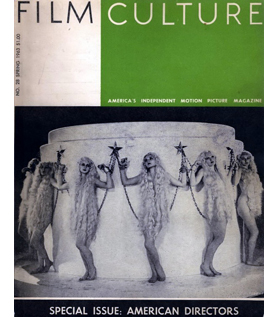 You can argue that the most epic display of the criticism of enthusiasm appeared in the spring 1963 Film Culture magazine. There Andrew Sarris published a roster of Hollywood directors under the rubric “The American Cinema.” Each director was given a filmography and critical commentary. Most important, they were grouped into snappy categories: Pantheon Directors, Third Line, Esoterica, Beyond the Fringe, and so on. In 1968, Sarris published the material as a book, expanded by a long prefatory essay, considering more filmmakers, and using other labels. “Esoterica” became “Expressive Esoterica,” for example, and “Third Line” became “The Far Side of Paradise.” Some directors were also re-sorted; Anthony Mann moved up from Esoterica to the Far Side. The category “Fallen Idols,” which included many of the most revered directors (Wyler, Huston, Kazan, Lean, Wilder, Zinneman), was now the snarkier “Less Than Meets the Eye.”
You can argue that the most epic display of the criticism of enthusiasm appeared in the spring 1963 Film Culture magazine. There Andrew Sarris published a roster of Hollywood directors under the rubric “The American Cinema.” Each director was given a filmography and critical commentary. Most important, they were grouped into snappy categories: Pantheon Directors, Third Line, Esoterica, Beyond the Fringe, and so on. In 1968, Sarris published the material as a book, expanded by a long prefatory essay, considering more filmmakers, and using other labels. “Esoterica” became “Expressive Esoterica,” for example, and “Third Line” became “The Far Side of Paradise.” Some directors were also re-sorted; Anthony Mann moved up from Esoterica to the Far Side. The category “Fallen Idols,” which included many of the most revered directors (Wyler, Huston, Kazan, Lean, Wilder, Zinneman), was now the snarkier “Less Than Meets the Eye.”
The 1963 original and the 1968 book created a revolution in film taste. Sarris had been polemicizing in favor of “the auteur theory” for some time, but with his encyclopedic survey he created a canon. He claimed that he wanted only to launch a systematic history of American cinema, but the result was hardly historical in a strong sense. What mattered was critical evaluation. Writing a history of Hollywood would amount to appraising its directors.
Directors hadn’t wholly been ignored by earlier writers. Griffith, Chaplin, Lubitsch, Flaherty, Stroheim, and Welles had been considered significant creative forces for some time. What Sarris sought to do was to map out the whole terrain of Hollywood to reveal a network of strong creators with distinctive “directorial personalities.” They were not merely craftsmen; they had artistic visions.
Sarris’s strategy was triumphantly successful. He included in his Pantheon not only the noteworthy figures I just mentioned but those revered by the Cahers du cinéma critics: Ford, Hawks, Hitchcock, Keaton, Lang, Ophuls, Murnau, Renoir, and von Sternberg. At least as important were his arguments in favor of second-tier figures like Aldrich, Borzage, Cukor, Minnelli, McCarey, Sturges, and Walsh. And so on down the line as he weighed the virtues of Gerd Oswald, Richard Quine, and dozens of others.
Sarris’s legacy remains. To this day books and articles continue to be devoted to the works of these directors, famous and lesser-known. They are staples of Hollywood history. At the same time, researchers have expanded Sarris’s purview by elevating some of his choices (e.g., Curtiz) and discovering major films by minor figures (e.g., Ulmer). Martin Scorsese’s Personal Journey through American Movies (1996) is very much in the Sarris spirit, offering some different categories but still committed to the auteurist canon.
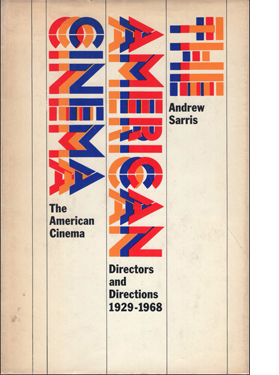 Film scholars today may question the tenets of the auteur theory, preferring to find involuntary cultural pressures in classic works, but to a surprising extent the big names remain central. And researchers discovering unexpected value in forgotten figures like Hugo Fregonese (subject of a retrospective at Bologna’s Cinema Ritrovato this year) are fulfilling Sarris’s edict that every film and filmmaker deserve serious scrutiny. (One critic has suggested that Fregonese would fit comfortably into Expressive Esoterica.)
Film scholars today may question the tenets of the auteur theory, preferring to find involuntary cultural pressures in classic works, but to a surprising extent the big names remain central. And researchers discovering unexpected value in forgotten figures like Hugo Fregonese (subject of a retrospective at Bologna’s Cinema Ritrovato this year) are fulfilling Sarris’s edict that every film and filmmaker deserve serious scrutiny. (One critic has suggested that Fregonese would fit comfortably into Expressive Esoterica.)
The book version of The American Cinema: Directors and Directions popularized Sarris’ aesthetic of classic Hollywood. Just as important, it was a tribute to enthusiasm-fueled cinephilia. Sarris might talk about research, but this was mostly about enjoyment, seeking out little-noticed pleasures in a vast flowering landscape. “If you received The American Cinema at the right moment in your life,” notes Kent Jones, “and many people including myself did, it came with the force of a divination, a cinematic Great Awakening.”
But films continue to be made, and how are we to appraise them? Some directors in Sarris’s survey continued their careers into the 1970s and beyond, but others emerged. Many of those became labeled the “New Hollywood.” From this perspective, Tarantino’s Cinema Speculation proposes a counter-canon, a cluster of filmmakers and films that demand to be appraised on terms that differ somewhat from those laid down by Sarris. Yes, they are solid artisans. Yes, they have “personal visions.” But their auteur artistry has its own commitments.
Sources of enthusiasm
Bullitt.
Central to those commitments is the idea of genre. In one of the richest essays in the book, Tarantino suggests that what follows Sarris’s period survey is a new Hollywood, which has two phases. In the first, Penn, Altman, and other filmmakers commit to criticize classic genres, pointing out their political and racial biases. The second phase consists of directors like Spielberg, Lucas, and De Palma who love genres and want to update and strengthen them, or to invent new ones, like the “Revengeamatic.” Tarantino appreciates both trends, but his sympathy lies with the second one. He praises some older genre directors like Don Siegel and is especially sensitive to New Hollywood filmmakers who either worked to update genres (Tobe Hooper) or balanced indulgence in the genre with some critique of it (Taxi Driver, Hardcore).
Tarantino’s favored 1970s genres are centered on violence: crime stories, westerns, urban adventures. In this, he follows audience tastes. Most people aren’t auteurists, least of all Tarantino’s 70s male mentors. He also focuses his attention on scripts, often providing backstory on how some of his favorites were revised in the production process.
More specifically, he’s interested in character and dialogue–again, mirroring what most moviegoers notice and enjoy. He analyzes character action and sometimes interprets it as reflecting public attitudes or the director’s temperament. He savors memorable lines of dialogue and reenacts the joy of audiences responding to them. In Taxi Driver:
Then the moment happened that made the whole theatre burst into hysterics. That one guy walking down the street, ranting and raving that he’s going to kill his woman (“I’ll kill ‘er! I’ll kill that bitch!”). We laughed so hard at that guy, we were a little disconnected from the movie for the next twenty minutes.
Travis Bickle’s Mohawk haircut triggers the same response. “The whole theatre burst out laughing. I’m talking hysterically laughing. I’m talking rolling in the aisles laughing–Get a load of that goddamn crazy fool!”
The concern for characters emerges further in Tarantino’s unabashed admiration for acting. Sarris’ American Cinema treated stars as plastic material for the director’s vision. For John Ford, John Wayne develops as a darkening version of western heroism. James Stewart is radically different in films by Capra, Preminger, and Anthony Mann. But Tarantino treats stars as bringing their own valences, which the director can fulfill more or less well. Steve McQueen is the privileged example.
The man embodies 1960s cool, and the films that respect that become singularly satisfying. Bullitt becomes a perfect vehicle for this paradigm of hip detachment.
This is the role he deserves to be remembered by. Because in this role he demonstrates what he could do that Newman and Beatty couldn’t.
Which is just be.
Just fill the frame with him.
There was craft at work here. Tarantino reveals that McQueen often trimmed his own dialogue, giving lines to others, because he knew the audience would be watching him. He could steal a scene with his pinky finger, as I tried to show here. But in Bullitt, he does so little that we watch him warily.
Tarantino doesn’t bother with description of how this minimalism works facially–the fixed blue-eyed stare, the enigmatic pinched lips, the flat brows. He goes straight to psychology: Bullitt doesn’t engage with anyone, so his mental states are opaque to us. His girlfriend admonishes him for his refusal to open up about his feelings. “Bullitt,” Tarantino says, “doesn’t explain to the audience or other characters what he’s doing or thinking. He just does them and we watch.” Here cool turns cold.
With performance as a central concern, Tarantino naturally reflects a lot on casting and performance. His vast knowledge of the genre and Hollywood actors, from stars to sidekicks, allows him to probe the actor’s development of the character, as he does with Burt Reynolds in Deliverance and Sylvester Stallone in Paradise Alley. He often speculates on what the film would be like if this role were filled by someone else. What if Lee Marvin replaced Burt Reynolds in Deliverance? What if The Getaway was recast making Stella Stevens McQueen’s wife, Richard Boone his major adversary, and Stuart Whitman the master mind? These “cinema speculations” are sometimes derived from actual casting choices, sometimes from Tarantino’s huge knowledge of Hollywood players.
Add in music, to which Tarantino is very sensitive, and you have an aesthetic tailored to audience pickup. He has almost no specific comments about imagery or camera technique, the sorts of things that audiences tend not to comment on. Above all, you know when you have a memorable movie moment if a line or character reaction or actions scene induces the audience to shriek in pleasure. From age 4, he claims, for him the thrill of cinema has been bound up with a crowd response. (I found this reassuring, as Perplexing Plots begins with an audience’s reaction to the climax of Pulp Fiction.)
Genre, character portrayal, memorable dialogue, performance filigree, the charisma of stars, and the immediate surge of audience appreciation–who else does this sound like? Pauline Kael.
Tarantino has called her the most influential person on his filmmaking; he pored over her collected reviews and channeled her voice. If Sarris was the impresario of classical studio production, Kael became the demanding guide to the New Hollywood. As Tarantino was absorbing the films, growing up with the flood of 70s features, he was tuning himself to the body of work that inspired her lyrical and indignant reviews. Sarris, who reviewed films for the Village Voice at the period, was always seeing the present in the terms of the past, but Kael’s New Yorker readers were happy for her electrifying assurance that some filmmakers were living in the moment. (Always the contrarian, she insisted that her readers inclined toward art films and ignored her recommendations about Hollywood’s output.) When she loved a film, her review was an orgy of enthusiasm–most notoriously, her piece on Last Tango in Paris (1972).
The only time I saw Kael in person, in fall of 1965, she shared a panel with Sarris at my college. Armed with a cigarette holder, she glittered by comparison with the rumpled, insomniac-looking man alongside her. He wanted to talk about Ophuls’ Lola Montès. She wanted to talk about The Cincinnati Kid and especially about its star, Steve McQueen. I usually resist symbolism, but it’s hard not to see this as part of a big change in tastes.
A fan’s notes
The Outfit (1973).
To get a sense of the strength of Tarantino’s criticism, consider his treatment of two genre masters. One is an old-timer who started in the 40s and had a vigorous career into the 1970s. The other is presented as a largely unappreciated director who helmed some of Tarantino’s favorites. Both illustrate the power of Tarantino’s enthusiasm and wide-ranging knowledge.
Across the 1950s and 1960s, Don Siegel developed a reputation for taut and violent action pictures, notably Riot in Cell Block 11, Invasion of the Body Snatchers, Baby Face Nelson, The Line-Up, The Killers, and Madigan. Sarris ranked Siegel with Budd Boetticher, Alan Dwan, Phil Karlson, and Joseph H. Lewis as “Expressive Esoterica.” But after Madigan (1968), starring Richard Widmark, Siegel became something of an A-list director. His status was reinforced by an alliance with Clint Eastwood for Coogan’s Bluff (1968), Two Mules for Sister Sara (1969), Dirty Harry (1971), and Escape from Alcatraz (1979). He worked with other top stars like Walter Matthau (Charley Varrick, 1973), John Wayne (The Shootist, 1976), and Charles Bronson (Telefon, 1977). For a time he had box-office success alongside the New Hollywood prodigies.
Tarantino pays lengthy homage to Siegel throughout Cinema Speculation. He sees him as a virtuoso not simply of action cinema but of screen violence, a pioneer of what would emerge in impact-based films of the 1970s like The French Connection and Straw Dogs. (The editing of Madigan‘s final shootout still looks daring today.) Tarantino declares that the rogue law-enforcement officer who pursues his “own self-determined version of justice. . . is practically the quintessential Siegel protagonist.” This quality sets the hero apart from his family, his peers, and society at large. Hence not only the bursts of brutality but also the curious lack of sympathy his cold, aloof men engender.
Tarantino celebrates several Siegel films but he focuses on Dirty Harry as a prototype and the director’s best. He traces the mutations of the script as the project moved from Universal to Warners, with John Milius adding the famous “I know what you’re thinking” line. In execution, the use of location shooting and many “movie moments” (Harry chewing his hot dog while firing at his prey, Harry’s foot pinning down the screaming Scorpio on a football field) show a master at work. Siegel excels in chase sequences, and Dirty Harry has plenty. Above all, the film aroused audiences. They were shocked by the violence and thrilled by “crowd-pleasing action set pieces.”
Tarantino answers criticisms of the film with some care. Dirty Harry isn’t, he claims a fascist film because it was responding to genuine anxieties of its audience. The film was tailored for older Americans unable to adjust to youth culture, civil rights, drugs, and other signs of apparent decay. Harry mostly doesn’t exceed reasonable behavior for an officer bent on justice. The exception is Harry’s torture of Scorpio; but that’s when the kidnapped girl might still be alive and the clock is ticking. Tarantino asks: “Would Billy Jack do any less?” Or, we might add, would Jack Bauer of 24?
More positively, Dirty Harry is the first significant serial-killer film, and it asks for a reconsideration of policing practices that are becoming outmoded after the Manson family and Zodiac. Scorpio is a new kind of villain who will flout the constraints of civil society. He seemed implausibly evil in 1971, but we hadn’t yet accustomed ourselves to the monstrous depravity of the obsessed killers out there. The film is a plea for “New Laws for New Crimes.”
Still, Tarantino calls the film “aggressively reactionary” in its reassurance that the audience’s fear of change is justified. He points out that the bank robbery has to be conducted by Blacks to fulfill its function of scaring the audience with the spectre of Black Power. Is it then a racist film? Siegel called Harry “a racist son of a bitch.” Tarantino modifies his case by calling Harry “both a troubled and a troubling character.” He doesn’t elaborate, but concludes that the ambivalence of the plot and its protagonist is overridden, Tarantino says, by the sheer professionalism of Siegel’s filmmaking. Today’s audiences, far from fascist or racist in their sensibilities, continue to enjoy the movie. As ever, the visceral response in the theatre is Tarantino’s touchstone.
John Flynn doesn’t feature in Sarris’s compendium, since his career directing features began in 1968. Mentored by Robert Wise, he had been assistant director on comedies and The Great Escape (1963) before his first feature, the repressed-gay drama The Sergeant (1968). His most famous film is the cult favorite Rolling Thunder (1977), a bloody revenge saga that makes highly inadvisable use of a kitchen garbage disposal. Seeing it at age 14, Tarantino reports that it “blew my fucking mind.” He followed its screenings across Los Angeles, and the book lovingly details all the venues he visited.
Over the years Rolling Thunder taught him that a film can criticize its own genre. He offers a comparative anatomy of the original script by Paul Schrader and the thorough rewrite by Heywood Gould. He finds that Gould’s screenplay improves the original, not least in an exchange between the two buddy heroes.
RANE: I’ve found the men who killed my son.
JOHNNY: I’ll just get my gear.
“That scene and those lines never fail to drive audiences wild wherever and whenever it’s projected. And trust me, I’ve seem Rolling Thunder with every type of audience imaginable.”
John Flynn’s other major work is The Outfit (1973), a story of a professional thief, Macklin, who avenges the murder of his brother by a series of assaults on businesses run by the syndicate. Ultimately the two launch an attack on the fortified mansion of the big boss. Tarantino praises the playing of Robert Duvall and especially Joe Don Baker’s swaggering performance as Cody, his wisecracking sidekick. “The hearty macho audience scattered around the little cinema made it even more fun. They laughed at everything Joe Don Baker said.”
It’s striking that Tarantino doesn’t mention the radical changes that Flynn, acting as screenwriter with assistance of Walter Hill, made to the original book. The Outfit (1963) is third in a long-running series of novels by Richard Stark (Donald E. Westlake) centering on the professional thief Parker. Tarantino professes himself a fan of the character, though he admits to not having read most of the books. In the novel, Parker is aiming to force the Outfit to pay the money it owes him from a double-cross. His strategy is to encourage several other thieves to hit Outfit enterprises on their own. The second half of the book is taken up with those robberies, each with a new gang targeting a business in different cities: a casino, a numbers operation, a heroin-smuggling enterprise, and a racetrack bookie scheme.
Parker drops out of these chapters, and Stark treats us to semidocumentary analyses of how each racket works. It’s a bold and fascinating approach, but the film avoids it, simply assigning some of the raids to Macklin and Cody. The result is a buddy movie. True, in the book Parker picks up a sidekick, Handy McKay, but their relationship is purely professional. Parker is a forbiddingly cold character, and no one can imagine him chortling, as Macklin does, at Cody’s final quip, “The good guys always win.”
Why did Tarantino ignore the book’s original plot structure? In Perplexing Plots, I devote a chapter to Westlake’s Stark novels because of their unique play with time. Every Parker novel but one is divided into four parts, and scenes are time-shifted within and between parts. Typically, one part leaves Parker’s viewpoint and whisks us from character to character within a fluid nonlinear chronology. In The Outfit, that section is the one tracing the gang’s guerrilla attacks on the syndicate, those in turn framed by the syndicate boss learning of them.
Most Stark adaptations drastically linearize the original plots. The most salient exception is Point Blank (1967), which pulverizes the action of The Hunter (1962) far more than Stark does. (Tarantino mostly scoffs at Boorman’s film, and I’m inclined to agree.) You’d think that Tarantino would notice how Flynn made the novel a more standard outlaw picture, whatever benefits it yielded.
The puzzle persists. Perplexing Plots has a chapter on Tarantino too, where I suggest that Stark’s structure has a deep affinity to the back-and-forth time schemes in Reservoir Dogs and Pulp Fiction. This notion stems from from Tarantino’s claim that The Hunter and other Stark novels “were very influential on” Reservoir Dogs. Perhaps Cinema Speculation‘s ignoring of the structural changes in Flynn’s version of The Outfit better captures Tarantino’s youthful response, in which masculine bonding and high-intensity violence play the central part. (He saw it at age 11, well before he read any Stark novels.) In any case, I hope my argument for his films’ affinity for the looped patterning of the Parker books seems plausible.
Tarantino’s focus on the 1970s shouldn’t make us forget his connoisseurship in other realms, such as Hong Kong cinema and the spaghetti Western. Still, he’s a model of the post-Kael downmarket cinephile, rummaging through every quickie release and even TV movies to find moments of arousing filmmaking in “the greatest movie-making era in the history of Hollywood.” Accordingly, he betrays little interest in Hollywood classicism; he can’t imagine working in the old studio system, in which a director might have to shoot a script he doesn’t like. Moreover, I think he finds the elegance of classical film too fastidious compared to the rough antics on display in his favorites.
My own tastes overlap his, though I doubt I’ll ever admire some of his prize filmmakers as much as he does. I’m principally a Sarrisite, insofar as my top Hollywood filmmakers coincide with his, though I find more to admire in Wyler and others than he does. And we all live on our own timelines. While that kid Tarantino was being transported by exploitation pics in the 1970s, I was stunned by the revelations of classic Japanese films by Ozu, Mizoguchi, and others. I think highly of Jaws (1975), but it’s not sublime in the manner of Early Summer (1951) or Sansho the Bailiff (1954).
No news: Tastes differ. Critics owe it to us to whip up enthusiasm for the films that give them goosebumps of rapture. But they also owe us reasoned arguments for how and why that happens. Cinema Speculation is, for me, at its best when Tarantino supports his appraisals with analysis. But even when he doesn’t, it’s still a fucking blast.
Thanks to Jim Healy for assistance in preparing this entry.
Other film criticism by Tarantino can be found on the Beverly Cinema site, as well as in his many interviews. He traces his devotion to Pauline Kael at length in Lynn Herschberg’s podcast.
The Sarris/Kael split isn’t as drastic as I’m making it. Kael loved classic Hollywood too, especially in its frothier moments and in films that featured strong heroines. But she was generally opposed to treating the directors as having unified artistic visions; they seldom achieved much beyond engaging kitsch. She wanted to preserve the immediacy of contemporary cinema for current life and for its public. Sarris in turn was always ready to celebrate studio actors of the Golden Age, and he was eager to interpret current releases in light of politics–as was Kael, with her complicated but fervent feminism.
Kael’s use of audience response as a touchstone surfaces throughout her reviews. She tells of audience applause in Gance’s Napoléon, hisses and walkouts in a Mel Brooks screening, viewers’ empathy for Teri Garr in Tootsie, and the roars of laughter greeting 48 Hrs. (All these are in Taking It All In [Holt, Rinehart, Winston, 1983], pp. 144, 216, 432, and 440.) I wondered about these real-time reports, because she saw most films she reviewed in pre-release press screenings. Often, she says, she saw the film on Monday and turned in the New Yorker review the next day. She discusses her reliance on press screenings in George Malko’s 1972 profile, “Pauline Kael Wants People to Go to the Movies,” in Conversations with Pauline Kael, ed. Will Brantley (University of Mississippi Press, 1996), 15-30.
Stephanie Zacharek, film critic for Time, tells me that Kael often attended screenings with paying audiences, sometimes before filing her pieces, if the New Yorker‘s deadlines were flexible enough. “In addition, during the 1980s, she was often shut out of screenings by studios that didn’t want her to see their movies. In those cases, she would go to an early public showing.” Thanks to Stephanie for this background.
Tarantino’s other major literary effort, his quasi-novelization of Once Upon a Time . . . in Hollywood, is considered in this entry. It has fascinating resonance with many ideas in Cinema Speculation.
Rolling Thunder (1977).
Little things
Equinox Flower (Ozu, 1958).
DB here:
Academic critics and fans share a passion for looking closely at the movies we admire. A lot of film critics enjoy spiraling out from the film to ponder Big Ideas, which is okay, I guess. But I confess I particularly enjoy digging in for trouvailles (great word), lucky discoveries that passed me by on earlier encounters.
Across my career, many of the directors I admire seem to have tucked in little things just for me (or you). They don’t necessarily carry meanings; they’re quietly decorative, subtly off-center to the narrative. Tati slipped peculiar items into the corners of the frame. Sturges offered gags that only people with his sense of humor will find funny. A successful crowdsourcing enterprise exposed Welles’ homages to early film. Above all, Ozu nudged me toward red teakettles and surprising details. Who else lines up the levels of beverages in a table setting, and then matches that plane to the edge of a fruit bowl?
If you care enough about my movie, the director seems to say, I’ll reward you with a trouvaille. Here are two I found recently.
Showing the stitches
Sometimes a trouvaille is a felicity of craft. The director quietly shows off his virtuosity to those in the know. While studying Pulp Fiction for a book I’m finishing, I noticed that Tarantino sets up the ending in a sidelong way.
You’ll remember that the opening shows Honey Bunny and Pumpkin discussing how a restaurant is one of the safest robbery targets. Abruptly they launch an assault on the diner. Then they drop out of the film for a couple of hours.
Very likely we’ve forgotten about them when Jules and Vincent settle down for breakfast in a diner. After discussing the virtues of pork products and the prospects for Jules’ future, Vincent rises to go to the toilet. As he pauses, it’s possible, but not easy, to discern the larcenous couple out of focus in their booth behind him. Given their peripheral status and the centrality of Travolta’s performance, I suspect that almost no one notices them on a first viewing.
Soon after Vincent has left, we’ll hear a repetition of the final bits of the couple’s conversation and we’ll see a replay of their leaping up to announce the robbery. Tarantino has rewarded the sharp-eyed viewer with a slight anticipation of the replay, and a hint at how his film will fold back on its opening sequence.
But this echo is matched by a “pre-echo” during the opening sequence. As Pumpkin and Honey Bunny plan their heist, a close view of her includes a bulky man in a t-shirt walking into the distance.
At this point, a first-time viewer hasn’t been introduced to Vincent, so the t-shirt guy is just part of the scenery. Only in retrospect do we realize that here Tarantino is anticipating, and overlapping, the portion of the robbery that we’ll see in the final moments of the film.
Here the critic/fan is invited to appreciate how carefully made the film is. It’s a quality we don’t sufficiently recognize in Tarantino: a delight in fine-grained formal niceties.
Easter Egg, avant la lettre
In Hitchcock’s Strangers on a Train (1950), tennis pro Guy Haines is introduced (implausibly) reading a book on his trip. Soon he’s accosted by the spoiled, marginally nuts Bruno Anthony, and the plot gets under way. Only a fan, or a critic, will want to know: What’s Guy reading?
It’s not easy to tell. We don’t get a close-up of the book. The best we can tell, from above, is that it’s a hardcover, with a photo on the back of the dust jacket. Later, after Guy and Bruno have shared a meal in a compartment, we can glimpse the spine.
Blown up, thanks to the glory of Blu-ray, the spine looks like this.
A little research reveals that the volume is Hitchcock’s collection of stories published in 1947 by Simon and Schuster.
Several anthologies were published under Hitchcock’s name from the 1940s onward, but most were in paperback. This was a more prestigious item, and I suspect it helped the branding effort that was underway during his Hollywood career. The picture on the back is of Hitchcock, of course. (My copy lacks a dust jacket, so I can’t supply that.) But the resonance comes from the fact that I was reading this very book as part of preparation for my own study of 1940s mystery culture.
It’s not exactly product placement; the book’s presence is too fleeting to register with audiences, surely. Including the book seems more in the nature of a private joke among Hitch and his team. Guy is a man of good taste, reading a book by the man directing the film he’s in.
Today we’re familiar with Easter Eggs, those bonus materials that establish a complicity between filmmmaker and viewer. Is this an early example? It could be a prize for fan connoisseurship. The book isn’t emphasized, being buried in the mise-en-scene, and so it encourages the devout to poke and probe. It also points outside the film to the production context. Still, how many 1950 viewers, lacking our ability to freeze and magnify the frame, could have spotted it? Perhaps only the devotion of a modern fan, aided by new technology, can bring this trouvaille to light. An incipient Easter Egg, then, awaiting digital technology to be discovered?
Once we’re down this rabbit hole, let’s scramble further. What stories might Guy be reading? There are two hints. We have the placement of the jacket flap in the shot above, and an earlier shot showing the book open.
As best I can tell, the story Guy’s reading is likely to be “Yours Truly, Jack the Ripper.” It tells of a psychiatrist who meets an Englishman called “Guy Hollis.” Sir Guy believes that Jack the Ripper has migrated to the US and is at large in Chicago. With the aid of the psychiatrist, Sir Guy finds him. Apart from the name Guy, the correspondence to Strangers it would seem to involve a peculiar bond between two men, one of whom is a psychopathic killer.
But there’s another, stranger affinity.
The author of “Yours Truly, Jack the Ripper” is Robert Bloch., whose novel Psycho would furnish Sir Alfred his 1960 film. Coincidence? In the land of trouvailles, are there any coincidences?
Fans have raked over these movies assiduously, so I can’t imagine I’m the first to notice these fine touches. No matter. When you discover them on your own, you still feel a tiny thrill of communicating with the filmmaker, behind the backs of all those folks who didn’t notice. Ozu, I often feel, is making movies especially addressed to me. It’s an illusion, of course, but I refuse to give it up.
Thanks to the University of Wisconsin–Madison Filmies listserv for helping me understand what counts as Easter Eggs, and for a reality check on my sanity.
This site includes lots more on Hitchcock, Ozu, Sturges, and Tarantino. My book on Ozu is available from the University of Michigan. It takes time to download, so be patient.
P.S. 15 August 2021: As I thought, I’m not the first. A mere twenty-one years ago, Dana Polan in his monograph on Pulp Fiction (British Film Institute) noticed the pre-echo of Vincent headed toward the toilet. Good going, Dana! Film analysis wins again.
Days of Youth (Ozu, 1929).
Once upon a time in Hollywood, again: Tarantino revises his fairy tale
Once Upon a Time . . . in Hollywood (2019).
I guess what I’m always trying to do is use the structures that I see in novels and apply them to cinema.
–Quentin Tarantino
DB here:
 Tarantino has often embraced print-based texts that revise or complement his films. He’s shared screenplays that differ sharply from the finished product, and written graphic novels derived from Django Unchained. Now he’s gone farther. He’s published a novelization that playfully modifies the film’s title: Once Upon a Time in Hollywood, without the three-dot ellipsis.
Tarantino has often embraced print-based texts that revise or complement his films. He’s shared screenplays that differ sharply from the finished product, and written graphic novels derived from Django Unchained. Now he’s gone farther. He’s published a novelization that playfully modifies the film’s title: Once Upon a Time in Hollywood, without the three-dot ellipsis.
Some will say, rightly, that the book is another instance of today’s tendency toward cross-platform narrative, what Henry Jenkins calls transmedia storytelling. As such it sells more stuff, builds fan connoisseurship, and provides academics like me more to talk about.
But I think it does more. Tarantino has long borrowed from popular literature, particularly crime fiction. (The book I just finished writing tries to trace out some of his debts.) With his novelization, he returns the favor by transferring some of his creative methods to the long-form prose format. Moreover, he realized that some conventions of two genres–the movie novelization and the Hollywood novel–could be steered in fresh directions. What he provides, I think, is not only a fresh path through the story world that will tease fans but also another of his accessible experiments with narrative form. As a bonus, the book shows the author to be a stimulating historian of American studio cinema.
Of course what follows contains spoilers for both the film and the book. But since you’ve had a good stretch of time to catch the film, and since the book currently sits at the top of the New York Times bestseller list, I’m hoping a fairly close analysis won’t scare away many readers. Even if you don’t read on, maybe the mere existence of this entry will send you to the two items in this intriguing multimedia package.
TV or not TV: What is the question?
The film weaves together the doings of actor Rick Dalton, stuntman Cliff Booth, and actor Sharon Tate, over the space of a few days. Rick has been hired to play a villain in a pilot for the TV series Lancer, and Cliff, no longer employable as a stuntman, fills his days serving as Rick’s personal assistant, maintenance man, and boon companion. Sharon, wife of Roman Polanski, lives a life of partygoing, shopping, and occasional screen performing. These characters cross paths with members of Charles Manson’s cultist “Family,” who in 1969 actually murdered Sharon and her guests in a home invasion. In the film, things turn out differently. The novelization takes up these characters and basic incidents but recasts them.
The typical novelization is published to promote a film just before its film’s release, and it sometimes serves as an enduring fan memento or a contribution to a franchise’s “canon.” The writer is often working from a screenplay or a detailed synopsis, so changes made in the later phases of production can render the finished film quite different from the book. But Tarantino’s novelization comes two years after audiences saw his film. Many readers have already seen the film, possibly several times, so they will be sensitive to deviations from the original. Tarantino exploits that knowingness in ways that are sometimes traditional, sometimes striking.
As you’d expect, a lot of the book is devoted to filling in the backstory of the three major characters. Flashbacks show how Sharon got to Hollywood and how Cliff became a stuntman (and a killer). Like other novelizations, Tarantino’s fleshes out subsidiary characters as well, providing the sort of enrichment of the story world that fans enjoy. And some scenes omitted from the finished film are dwelt on in the novel. For example, in the original pilot the Lancer half-brothers meet when they accidentally come to town on the same stagecoach. (Sorry about the punk YouTube rip.) Tarantino, always obliging, shot the scene in his own way and provides it as a bonus material on the disc.
The woman in the TV show is the patriarch’s ward, but in the novel and the film she becomes his daughter Mirabella, and thus the men’s half-sister.
Because a novel can plunge us more deeply into characters’ minds, Tarantino can share the thoughts of Cliff, Rick, and Sharon, as well as secondary figures like Squeaky Frome, Pussycat, Jay Sebring, Roman Polanski, and Manson himself. This widening of perspective alters Tarantino’s habitual storytelling method.
I’ve argued that his films rely on block construction, longish “chapters”attached to one character or set of characters. Whether offering us present-time scenes or flashbacks, they remain fairly self-contained chunks, often set off by titles. As a film, Once Upon a Time . . . in Hollywood broke with this scheme somewhat and presented more alternation among shorter scenes, though still anchored to one of the three main characters.
The novel is even more chopped up, presenting the story in twenty-five chapters, many of them including shifts in time or viewpoint. The transitions are clearly marked, with inner monologues rendered in italics and verb tense differentiating the present-time story from flashbacks. In all, the short, sharp scenes sample a broader panorama of Hollywood life than we find in the film, yielding something more like a network narrative.
The same expansion goes for time. The film leaves Rick’s future somewhat open, but the book sketches in his career after his confrontation with the Family marauders. We learn fairly early in the book that in the 1970s he will cut down on his drinking, an important motif in the book. We also learn the career arc of Trudi Fraser, the little girl with whom Rick performs in the Lancer pilot. A more conventional novelization probably wouldn’t include this anticipatory material, because it would foreclose developments that filmmakers might want to conjure up in a sequel.
Still, Tarantino does adhere to his block aesthetic in an odd way. Big chunks of the Lancer backstory not dramatized in the TV episode are given to us in dedicated chapters, written as if they were extracts from another novel. Recounted by an omniscient narration, they treat the Lancer family history on the same fictional level as the contemporary Hollywood plot. Why? I’ll try to explain below.
Tarantino has experimented with viewpoint shifts and replays throughout his work, most notably in the repeated money-drop sequence in Jackie Brown. Now, like a writer of fan fiction, he can extend the strategy to prose. So an episode registered by one character in the film can be filtered through another in the book. The most extended viewpoint displacement involves Cliff’s visit to Spahn ranch. In the film, we’re attached to him throughout, but in the book everything that happens in that scene is restricted to what Squeaky sees and hears. Viewers are likely to remember Cliff’s fruitless conversation with George, so the replay allows Tarantino to build up a more sympathetic portrait of Squeaky than we get in the film.
Two other narrative strategies are more surprising, but both target readers’ memory of the film. First, the book begins with an office conversation between Rick and agent Marvin Schwarz that echoes the restaurant meeting that opens the film. The reader is likely to think that the book’s ending will resemble the film’s end, which shows the Manson followers attacking Rick’s house rather than Polanski’s. This is the most drastic “alternative history” in the film, like the assassination of Hitler in Inglourious Basterds.
But the reader who’s seen the film will be thrown off on page 110. In a flashforward to March 1970, Rick gets a call from director Paul Wendkos inviting him to join a project. Prompted by a teasing remark by Wendkos, the narration quickly summarizes the summer 1969 invasion and its aftermath before briskly scanning the effect on Rick’s career in the seventies. If you’ve seen the movie, now you can’t be sure what will happen at the end of the book. Will the book’s climax replay the movie’s firefight? Or will something else tie up the plot? Call it show-offish or shrewd, Tarantino’s anticipation of the film’s ending has activated the reader’s awareness of his choices about narrative structure.
Related to this replacement-ending problem is a shift in rendering the filmmaking process. The film shows two scenes of the Lancer pilot being filmed. In the first, Johnny Madrid/Lancer rides into town, shoots down a hired gunman, and discusses joining Caleb DeCoteau’s gang. In the second scene, Caleb holds Lancer’s daughter Mirabella hostage while he arranges for ransom from Scott Lancer.
But the novel version only alludes to these scenes; it doesn’t dramatize the filming of them. The meeting of Johnny and Caleb is presented as part of the inserted Lancer “novel,” while the hostage parley is merely mentioned. The only scene that the book describes being shot is one for Rosemary’s Baby.
Instead, the novel dwells on what happens before shooting. On a porch Rick and Trudi discuss acting in general, and later she urges him to scare her during the hostage scene. Tarantino suppresses the act of filming this big scene, simply indicating laconically: “And Caleb and Miranda act out the scene.” Likewise, Sharon Tate, recalling her slapstick scene in The Wrecking Crew, dwells on what happened before the camera rolled.
Why the shift from filming to preparation? I’ll suggest one possibility a bit later.
Palimpsest of a period
Once Upon a Time in Hollywood is a “Hollywood novel.” Typically that genre centers on the rise and fall of a fictional star (Inside Daisy Clover) or an executive (The Last Tycoon), with glimpses of production woven in. The fictional characters dominate the plot, but there are references to actual people and studios, which (libel laws being what they are) serve mostly as colorful background. Tarantino follows these guidelines, but he offers a deeper analysis of American film history than any other Hollywood novel I know.
His isn’t a dry historical approach, though, because of the flamboyance displayed by the narrator. Instead of giving us a prudent bystander’s account in first-person narration, as What Makes Sammy Run? does, the book presents an omniscient yarn-spinner addressing us through phrases like “And bear in mind,” “Now, truth be told,” and “You must remember.” At the same time, efforts at purely literary bravado mix the cheap tabloid alliteration of James Ellroy with the weirdness of Cornell Woolrich.
Still, none could really match Aldo Ray when it came to publicly played-out poignant pity.
The six powerful equines come to a gentle stop.
The diminutive Polanski sports bed head on his cranium.
Who’s speaking? This narrator is at once omniscient and lightly personified. The Lancer segments are straight Western-novel narration, except when they’re not.
With his light Texas twang, Monty sang out, “Royo del Oro, last stop!” The backlit sunshine rays filtered through the gauze-like brown dust in the way, a hundred years from now, all cinematographers of western movies would hope to duplicate.
An “I” almost never creeps in, but throughout we’re hearing the Tarantino who produces interview patter and whose screenplays insert wise-ass stage directions.
Freddy finishes his playing-possum piss (Reservoir Dogs).
Everyone is smiling except you-know-who (Pulp Fiction).
From the floor, the bloody, sweaty, and in excruciating pain (she’ll probably lose that leg) German movie star says to the two American soldiers she’s just meeting for the first time. . . . (Inglourious Basterds).
Once Upon a Time in Hollywood goes some way to confirming Tarantino’s repeated claims that when he stops making movies, he’ll turn to novels. I will read them.
Every Hollywood novel is in a sense an alternative history, I suppose, but this unpredictable prose helps prepare us for something peculiar. Start with the time frame. The first and longest stretch of the film takes place on Friday 7 January 1969 and the following day, and these chapters are tagged with time indications. The film then skips ahead to the day and night of 10 August 1969, with the attack on Rick’s home. The book adheres to the February dates but as we’ve seen it “spoils” the film’s climax by announcing the massacre fairly early on.
The central action of the book confines itself to the two days when Rick meets Schwarz and shoots the Lancer pilot, on 7-8 February, 1969. But that chronology is thrown off by another tag. After chapters presenting the day and evening of Friday the 7th, a new chapter indicates that Pusssycat’s Kreepy Krawl (another Ellroyism) takes place at 2:20 AM on that day. It’s either a flashback to an early-morning period before the previous four chapters (why?) or a scene taking place after the earlier chapters, and so is occurring at 2:20 on the 8th, not the 7th.
The Krawl anomaly is an early indication that a misaligned calendar governs the whole book, as it did the film. The actual Lancer pilot was shot in 1968, not 1969. Tarantino has merged events of one year (Rick’s career crisis, the Lancer shoot) with those of a later one (the actual Tate-LaBianca murders).
The typical Hollywood novel inserts made-up stories into a world of real ones, but Tarantino goes further. Your typical director would have pasted Rick on the cover of Time, but Tarantino goes for Mad. Your average movie-geek director would have had Rick reading an actual western novel, maybe Hombre in homage to Elmore Leonard. Instead, Tarantino invents a novel, Ride a Wild Bronc, by the real author Marvin H. Albert, because he wants a parallel between Rick and that book’s hero Easy Breezy. (The fact that Albert himself wrote many novelizations is a bonus.) Likewise, amid a flood of information about genuine Paul Wendkos films and stars therein, Tarantino deletes one actor (James Franciscus) from Hell Boats (1970) to cast the fictitious Rick in the part.
The substitution gambit is literalized in the film, when we learn the gossip that Rick supposedly just missed getting the McQueen part in The Great Escape (1963).
A comparable substitution conceit in the book is the jumble of publisher advertisements printed in the back. What could Tarantino’s book promote? Other books of the period published by Harper, of course: Oliver’s Story (1978), Serpico (1973), and Leonard’s The Switch (1978). The dates suggest that the “original” version of Once Upon a Time in Hollywood was published in the late 70s, and this accords with hints in the narration and the book’s design. These period ads sit alongside one for the fake Ride a Wild Bronc and one for a purported hardcover edition of Once Upon a Time in Hollywood (fake? forthcoming?).
Yet these dabs of phony history allow the book to float some genuine historical analysis. The constant references to obscure movies and TV shows might be taken as merely Tarantino’s nerdy self-indulgence. In fact, these citations fit into a fairly coherent cross-section of the period’s filmmaking and film culture, with the trends filtered through the business decisions and personal tastes of his characters. 1960s Hollywood turns out to be a palimpsest.
One layer is the fading of the studio system, reflected in agent Schwarz’s boast that he handles old royalty like Farley Granger and Joseph Cotten. Rick expresses his admiration for classic B-picture directors Wendkos and William Witney. Sharon’s backstory, when she hitched a ride to LA, reminds us of the enduring Hollywood myth of fresh-faced outsiders breaking in.
There’s also the new competition from European genres and overseas art films. Cliff, who scorns Antonioni and Resnais, is a big fan of Kurosawa and I Am Curious–Yellow. Now a European arthouse director has made a smash American hit, Rosemary’s Baby, and Rick fantasizes being tapped by Polanski. By contrast, Rick is reluctant to venture into spaghetti westerns, the new territory for a has-been US star.
“TV,” people used to say, “gets ’em on the way up or on the way down.” That’s been pretty much Rick’s career trajectory. Broadcast television has disrupted everything. B-directors like Wendkos shift between the two media, but the A-list older stars can’t sustain a series. Still, the narrator admits that some of these “sought to subvert their personas,” as Henry Fonda did in Once Upon a Time in the West.
Young talent is on the make. James Garner, James Coburn, and many other TV stars can jump to film, while Lee Marvin can shift from B-film villainy to TV heroism (M Squad) and return to films to play dark lead roles. The most shining example is Steve McQueen, who after his series Wanted–Dead or Alive became a top film star. In Tarantino’s film, he’s briefly seen commenting on Polanski’s ménage, but in the book McQueen haunts Rick’s life. The misbegotten anecdote about The Great Escape follows him everywhere.
At forty-two Rick is caught between two trends. He’s loyal to older directors and a classic genre, and he hates Eurowesterns and the counterculture. But to keep working he’s in competition with “the three Georges”–Peppard, Maharis, and Chakiris. Ten years ago he had his own series. Now he must wear a mustache and a biker wig and be the bad guy shot down by the newest “swinging dick.”
Said dick would be, in the Lancer pilot, James Stacy, to whom an entire chapter is devoted. He is the next failed McQueen, the young paladin who started memorably on Gunsmoke but now realizes that the clean-cut bad boy is on the way out. He admires Rick’s early work and envies Rick’s “fucking fly” look as Caleb. He yearns to wear a mustache.
The TV western has developed its own conventions, which Tarantino’s novel filters through the characters’ awareness. Schwarz introduces us to the antagonism between the series hero and the heavy, emphasizing that with every one-shot appearance, the guest star’s image suffers. After Rick reads the Lancer script, he admires its boldness in choosing as a protagonist Johnny, the sort of cocksure hothead who’d normally be shot down in the last act. Trudi is well aware that she is “just the ‘little tyke’ series regular.” More broadly, the book’s narrating voice realizes that westerns are based on “the man of principle pushed past his breaking point and beyond his nature. Most of Greek tragedy, half of all English theater, and three-quarters of American cinema operated from this premise.”
Men in war and at work
Men in War (1957); Aldo Ray on left.
The book spares some thoughts for women working in Hollywood. Schwarz’s secretary Miss Himmelsteen winds up becoming a talent agent who also performs fellatio on her clients. Sharon Tate, who prefers the Monkees to the Beatles, is fully aware that she’s playing the role of “sexy little me” in most social encounters. Yet she genuinely enjoys the audience laughter aroused by her klutzy scene in the not-very-good The Wrecking Crew.
Still, the book dwells far more on the men. The Mannix episode on Cliff’s TV spells it out.
These men are anxious. Both Rick Dalton and James Stacy see their futures endangered. Charlie Manson is trying to build a career in the music business, but his clumsy networking reveals him as a loser. Most strikingly, in devoting seven chapters to Cliff Booth’s life story, the narration presents a composite of trends swirling through the period.
We who’ve seen the film know Cliff’s manic, LSD-buzzed defense of Rick’s home. But who is he? This war hero who has murdered his wife and three other people is a hard case with a soft spot for foreign films. He’s a dog lover who put his pit bull Brandy through harrowing fights. He hurls Bruce Lee against a car but, out of concern for George Spahn, worries that the hippies encamped on his ranch are exploiting him. If Rick and James’ niches in the hierarchy are shifting, Cliff knows his place is near the bottom. Living in a crummy trailer eating Kraft Macaroni & Cheese, he can survive thanks to his muscle and his wits. He might be a man of principle who’s just pushed past his breaking point a bit too often.
Enter Aldo Ray, an actual actor whom Tarantino has long celebrated. Despite working with George Cukor, Anthony Mann, Raoul Walsh, and other top directors, Ray destroyed himself through alcohol and wasteful spending. He gets his own chapter near the end, brought into the story when Cliff is stunting on a runaway production in Spain. While Charles Bronson is becoming a star, Aldo is sinking into a numb despair. He is what Rick or Stacy might become.
As the book closes, this parade of masculine misery replaces the film’s Manson Family siege. After finishing the day’s Lancer shoot, Rick and Stacy head out to the Drinker’s Hall of Fame, a tribute to great Hollywood drunks. Cliff and other acquaintances join them, and they share stories of their sex lives and the productions they worked on. Rick finally manages to spell out why he hates the Great Escape rumor. He admits to his peers that he never really had any chance for the McQueen part. That clarity seems to give Rick a dose of prudence: he leaves early because he needs to learn his lines for tomorrow. For the reader, the drinking bout chimes with Aldo Ray’s plight in the prior chapter, and it suggests how Rick will survive the 1970s. His reconciliation with Stacy will lead both to keep their alcoholism under better control.
Rick’s flash of self-discipline is among the many epiphanies that pile up in the final pages. Sharon, sweet-natured throughout, now gets annoyed with Polanski’s whining bossiness and maneuvers him into holding a pool party. Schwarz calls Rick and offers him a chance for a spaghetti western. Rick runs into Steve McQueen, and his resentment of the superstar drains away in a shared memory of male camaraderie, a pool game long ago. Above all, Rick gets a call from Trudi that resets his relation to his past and his craft.
An actor prepares
Tarantino admires directors, but he adores actors. Has any film more fully portrayed the insecurities of performers? Rick sees his career going down the drain while upstarts like Stacy and the coolly competent Trudi Fraser, only eight years old, are more professional than he is. Rick is baffled by the director’s pretentious ambitions (“Be evil sexy Hamlet”) and rages in his trailer when he blows his lines. Each small error confirms Schwarz’s diagnosis that Rick can flourish only in a downmarket cinema, below even episodic TV.
One of the film’s finest sequences builds enormous tension when it shows Rick struggling to keep up with Stacy in their saloon reunion.
Tarantino could have shot this sequence in 4:3 ratio and TV style, in accord with the Bounty Law commercial that opens the movie. But the bar sequence, like the hostage scene to come later, maintains the same stylistic tenor–widescreen, long takes, rich color–that presents the story of Rick, Cliff, and Sharon. Remarkably, we don’t see any shots of the director and crew watching the performance. The production staff remain offscreen, cueing Rick’s lines. Tarantino has fused the modern camera with the TV camera, “rewriting” the TV production with shadowy modern lighting and arcing camera moves. This filming strategy puts the pilot on par with the surrounding story, just as in the book the Lancer family saga carries the same weight as the 1969 story line.
At the same time, the sequence lets us see just how difficult film acting is. (You can see Stacy trying to match his spoon’s movements to get a clean retake.) An awkward axial cut-in to the bartender delivering Johnny’s beans may be hinting that already Rick has blown a line and they had to reshoot it.
Acting is hard. Even bad acting is hard. Could you or I do what Rick has to do in this scene?
Seeing Rick’s malfunctioning performance in this scene puts more pressure on the big hostage scene, which again runs as if it’s part of the surrounding film. But now, after Rick aces the scene, we get our first crew shot and the director’s happy reaction, along with Trudi’s whispered praise.
Even more than the film, the book pays homage to the strain of actors’ working lives. By sequestering the Lancer episodes in separate chapters, Tarantino can focus elsewhere on the sheer terror of preparation for filming them. Now we see why the book stresses the performers’ leadup to each shoot. We’ve seen in the film how harrowing it is to screw up, and the book digs into the panic of preparation.
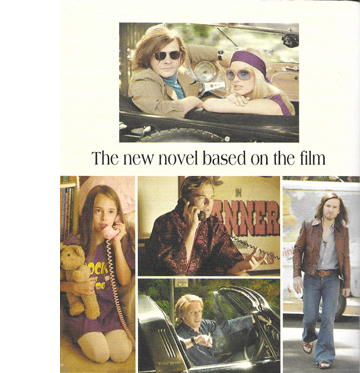 Which is why, I suggest, the book ends with one more phone call. (The back cover of the paperback hints at its imporance.) Suspecting that Rick is slacking off, Trudi calls Rick to goad him into rehearsing. As they start to run the lines, they slip into their characters. The narration cooperates.
Which is why, I suggest, the book ends with one more phone call. (The back cover of the paperback hints at its imporance.) Suspecting that Rick is slacking off, Trudi calls Rick to goad him into rehearsing. As they start to run the lines, they slip into their characters. The narration cooperates.
Caleb answers flippantly, “Greed’s what makes the world go ’round, little lady.”
The little lady says her name out loud: “Mirabella.”
“What?” Caleb asks.
The eight-year-old child repeats her name to the outlaw leader. “My name is Mirabella. If you’re gonna murder me in cold blood, I don’t want you to just think of me as Murdock Lancer’s little girl.”
Something about the way she says that registers with the outlaw. And suddenly it becomes important for Caleb to make her understand his fairness on this matter.
Through Rick’s performance the narration can plunge into Caleb’s mind. Things get even more complex when Johnny enters the scene, voiced by Trudi.
Trudi as Johnny points out, “Something happens to that money and we don’t get it, that’s our problem.”
Caleb spins toward Johnny and violently says, “Something happens to that money, that’s her problem!” With fire in his eyes, he tells Johnny Lancer, “Git it straight, boy! . . .”
Very soon Caleb will be shot dead, as enacted by Rick over the phone.
As usual, we won’t see the scene filmed, but Trudi foresees the result. “We’re going to kill this scene tomorrow.” Rick agrees. When she adds that they’re in a great line of work, Rick has his biggest epiphany. Trudi is right. The career that seemed so dismal has let him work with great actors, make love to beautiful women, enjoy luxuries most men never dream of.
He looks around at the fabulous house he owns. Paid for by doing what he used to do for free when he was a little boy: pretending to be a cowboy.
Boys will be boys, apparently forever.
Tracing three movie careers–a fading star, an aspiring starlet, and a below-the-line crew member–the film and the book provide Tarantino’s views not just of swinging-60s Hollywood (“You shoulda been there!”) but what working in The Business is like. Like most books and movies set in the film capital, these two texts show the pleasures and pains of a life that’s at once glamorous and dangerous.
But thanks to visual and verbal bravado, ingenious crosstalk between cinema and prose, and a respect for actors, Tarantino has gone beyond the usual finger-wagging chastisement of Hollywood excess. His taste for low-grade product, which has sometimes seemed an auteur provocation, is revealed as a respect for the desperate energy that animates even barely talented performers. That stubborn struggle, he suggests, is more rewarding than hippies’ hopes to mosey into nirvana.
Tarantino’s respect for those who dare to make movies, even opportunistic and down-market ones, puts him squarely in the classical Hollywood tradition of striving professionalism. His protagonist realizes, Capra style, that he has a wonderful life. Weird as it sounds to say it, Tarantino’s multimedia fairy tale might be the squarest story he ever told.
The epigraph comes from Graham Fuller, “Answers First, Questions Later,” in Quentin Tarantino: Interviews, rev. ed., ed. Gerald Peary (Jackson: University of Mississippi Press, 2013), 37.
More homework for the Tarantino squad: Trudi Fraser in the film is Trudi Frazer in the book.
Jeff Smith’s discussions of the film, here and here, were our most popular 2019 entries. They still hold up.
Through a blunder, I missed seeing Mark Minett’s careful email reply to my question about the saloon dialogue scene. Would such an arcing shot be likely in network TV of the period? His response is very helpful:
As for lateral or arcing camera movements during shot reverse shot sequences, I think these must be pretty rare. It’s possible a show might feature one every once and awhile, but these would likely stand out as a directorial flourish. The late 1960s television I’ve seen tends to have static s/rs, with variety achieved through camera height and angle, though I did just see an episode of Hawaii Five-O where the reverse shot was a moving close-up of a pacing Jack Lord.
Typically, you’d get mobile framing as you set up the key figures and then cut into the s/rs sequence. We sort of get that in the LANCER sequence as they sit to eat, and then there’s that interesting jump cut and track back reset as the man approaches with the food (I wonder if this was supposed to signal imperfection and authenticity or what?). Or, you could get a push in on a face at a climax, usually as they move out of the scene or to a commercial, as in the “1958” Bounty Law footage, though I think the more common option was just to hold on a close-up. That arcing move around the back of Olyphant’s head in Lancer, though, would be unusual, I think.
I wonder if it’s worth distinguishing this kind of arcing movement that basically just resets the framing of the scene, from the kind of arcing movements that seem more common now, which continue across cuts and underwrite the dramatic tension of a sequence. The former seems like more of a possible – though still probably very rare – option on the menu of that era’s filmed television, while I’d be really really surprised to find the latter. These are all just somewhat informed hunches, though, and there’s definitely room for real research here. Arcing and lateral movements aside, I’m also not sure when s/rs sequences in filmed TV started to regularly incorporate the slow push-ins that develop over the course of a sequence. So much worth investigating!
Mark should know. He’s the author of an excellent book on Robert Altman’s work, with close study of his TV projects. Another scholar of televisual style, Jonah Horwitz replied as well.
I don’t really have much to add to Mark’s response except nods of agreement. I don’t have the Tarantino movie to hand but the kinds of embellishments David describes would be pretty rare. S/R/S, as Mark notes, tends to be locked down (though not usually as metronomic as on Dragnet!)
A few folks have made some very tentative arguments for directorial style in midcentury US series TV partly on the basis of camera movement—that is, based on ambitious movements being the exception rather than the rule. Some of the former live TV directors I studied tried to import their love of long takes and elaborate camera movements into telefilm production with very mixed success (often they ran into the opposition of producers who wondered why they weren’t getting through x number of setups per day). Some of Joseph H. Lewis’s ’50s TV episodes stand out—in spots—for such things.
Re. Mark’s question, in live TV drama S/R/S is typically handled using long lenses, which made precise or ambitious camera movements somewhat difficult for such sequences. I argue in my dissertation that much of the innovation in S/R/S in live TV drama came from finding ways to get more frontal angles on characters without the camera shooting the reverse-field intruding into the shot. Earlier live drama S/R/S set ups have an obliquity owing to the shooting situation. (If you imagine the prototypical S/R/S staging with a camera placed in front of each character, you can see the problem.) Later directors and cameramen mitigated this through careful planning and extremely dexterous crews. But, again, this is in 50s/early 60s live TV—far from the late 60s telefilm that Tarantino is supposedly pastiching.
I wonder if the partially anachronistic shooting style of the Lancer segment could be motivated by the dream-film aspect of the movie (or maybe given Tarantino’s tendency to flagrant stylization we don’t even need recourse to a more specific alibi).
P. S. 21 July 2021: Tarantino discusses the book in a fascinating interview with Mike Fleming, Jr. at Deadline.
Once Upon a Time . . . in Hollywood.
Learning to watch a film, while watching a film
The Hand That Rocks the Cradle (1992).
DB here:
“Every film trains its spectator,” I wrote a long time ago. In other words: A movie teaches us how to watch it.
But how can we give that idea some heft? How do movies do it? And what are we doing?
Many menus
Tinker, Tailor, Soldier, Spy (2011).
In my research, I’ve found the idea of norms a useful guide to understanding how filmmakers work and how we follow stories on the screen. A norm isn’t a law or even a rule; it’s, as they say in Pirates of the Caribbean, more of a guideline. But it’s a pretty strong guideline. Norms exert pressure on filmmakers, and they steer viewers in specific directions.
Genre conventions offer a good example. The norms of the espionage film include certain sorts of characters (secret agents, helpers, traitors, moles, master minds, innocent bystanders) and situations (tailing targets, pursuits, betrayal, codebreaking, and the like). The genre also has some characteristic storytelling methods, like titles specifying time and place, or POV shots through binoculars and gunsights.
But there are other sorts of norms than genre-driven ones. There are broader narrative norms, like Hollywood’s “three-act” (actually four-part) plot structure, or the ticking-clock climax (as common in romcoms and family dramas as in action films). There are also stylistic norms, such as the shoulder-level camera height and classic continuity editing, the strategy of carving a scene into shots that match eyelines, movements, and other visual information.
Thinking along these lines leads you to some realizations. First, any film will instantiate many types of norms (genre, narrative, stylistic, et al.). Second, norms are likely to vary across history and filmmaking cultures. The norms of Hollywood are not the same as the norms of American Structural Film. There are interesting questions to be asked about how widespread certain norms are, and how they vary in different contexts.
Third, some norms are quite rigid, as in sonnet form or in the commercial breaks mandated by network TV series. Other norms are flexible and roomy (as guidelines tend to be). There are plenty of mismatched over-the-shoulder cuts in most movies we see, and nobody but me seems bothered.
More broadly, norms exist as options within a range of more or less acceptable alternatives. Norms form something of a menu. In the spy film, the woman who helps the hero might be trustworthy, or not. The apparent master mind could turn out to be taking orders from somebody higher up, perhaps somebody supposedly on your side. One scene might avoid continuity editing and instead be presented in a single long take.
Norms provide alternatives, but they weight them. Certain options are more likely to be chosen than others; they are defaults. (Facing a menu: “The chicken soup is always safe.”) An action film might present a fight or a chase in a single take (Widows, Atomic Blonde), but it would be unusual if every scene in the film were played out this way. Not forbidden, but rare. Avoiding the default option makes the alternative stand out as a vivid, willed choice.
Very often, critics take most of the norms involved for granted and focus on the unusual choices that the filmmakers have made. One of our most popular entries, the entry on Tinker, Tailor, Soldier, Spy, discusses how the film creates a demanding espionage movie by its manipulations of story order, characterization, character parallels, and viewpoint. It isn’t a radically “abnormal” film, but it treats the genre norms in fresh ways that challenge the viewer.
Because, after all, viewers have some sense of norms too. Norms are part of the tacit contract that binds the audience to creators. And the viewer, like the critic, looks out for new wrinkles and revisions or rejections of the norm–in other words, originality.
Picking from the menu
Norms of genre, narrative, and style are shared among many films in a tradition or at a certain moment. We can think of them as “extrinsic norms,” the more or less bounded menu of options available to any filmmaker. By knowing the relevant extrinsic norms, we’re able to begin letting the movie teach us how to watch it.
The process starts early. Publicity, critical commentary, streaming recommendations, and other institutional factors point up genre norms, and sometimes frame the film in additional ways–as an entry in a current social controversy (In the Heights, The Underground Railroad), or as the work of an auteur. You probably already have some expectations about Wes Anderson’s The French Dispatch.
Then, as we get into the film, norms quickly click into place. The film signals its commitment to genre conventions, plot patterning, and style. At this point, the film’s “teaching” consists largely of just activating what we already know. To learn anything, you have to know a lot already. If the movie begins with a character recalling the past, we immediately understand that the relevant extrinsic norm isn’t at that point a 1-2-3 progression of story events, but rather the more uncommon norm of flashback construction, which rearranges chronology for purposes of mystery or suspense. Within that flashback, though, it’s likely that the 1-2-3 default will operate.
As the film goes on, it continues to signal its commitment to extrinsic norms. An action scene might be accompanied by a thunderous musical score, or it might not; either way, we can roll with the result. The characters might let us into their thinking, through voice-over or dream sequences, or we might, as in Tinker, Tailor, be confronted with an unusually opaque protagonist whose motives are cloudy. The extrinsic norms get, so to speak, narrowed and specified by the moment-by-moment working out of the film. Items from the menu are picked for this particular meal.
That process creates what we can call “intrinsic norms,” the emerging guidelines for the film’s design. In most cases, the film’s intrinsic norms will be replications or mild revisions of extrinsic ones. For all its distinctiveness, in most respects Tinker, Tailor adheres to the conventions of the spy story. And as we get accustomed to the film’s norms, we focus more on the unfolding action. We’ve become expert film watchers. We learn quickly, and our “overlearned” skills of comprehension allow us to ignore the norms and, as we stay, get into the story.
Narration, the patterned flow of story information, is crucial to this quick pickup. Even if the film’s world is new to us, the narration helps us to adjust through its own intrinsic norms. The primary default would seem to be “moving spotlight” narration. Here a “limited omniscience” attaches us to one character, then another, within a scene or from scene to scene. We come to expect some (not total) access to what every character is up to.
In Curtis Hanson’s Hand That Rocks the Cradle, we’re initially attached to the pregnant Claire Bartel, who has moved to Seattle with her husband Michael and daughter Emma. When Claire is molested by her gynecologist Dr. Mott, she reports him. The scandal drives him to suicide, and his distraught wife miscarries. She vows vengeance on Claire. Thereafter, the plot shuttles us among the activities of Claire, Mrs. Mott, Michael, the household handyman Solomon, and family friends like Michael’s former girlfriend Marlene. The result is a typical “hierarchy of knowledge”–here, with Claire usually at the bottom and Mrs. Mott near the top. We don’t know everything (characters still harbor secrets, and the narration has some of its own), but we typically know more about motives, plans, and ongoing action than any one character does.
More rarely, instead of a moving spotlight, the film may limit us to only one character’s range of knowledge. Again, scene after scene will reiterate the “lesson” of this singular narrational norm. That repetition will make variations in the norm stand out more strongly. Hitchcock’s North by Northwest is almost completely restricted to Roger Thornhill, but it “doses” that attachment with brief asides giving us key information he doesn’t have. Rear Window and The Wrong Man, largely confined to a single character’s experience, do something similar at crucial points.
Sometimes, however, a film’s opening boldly announces that it has an unusual intrinsic norm. Thanks to framing, cutting, performance, and sound, nearly all of Bresson’s A Man Escaped rigorously restricts us to the experience of one political prisoner. We don’t get access to the jailers planning his fate, or to men in other cells–except when he communicates with them or participates in communal activities, like washing up or emptying slop buckets.
The apparent exception: The film’s opening announces its intrinsic norm in an almost abstract way. First, we get firm restriction. There are fairly standard cues for Fontaine’s effort to escape from the police car that’s carrying him. Through his optical POV, we see him grab his chance when the driver stops for a passing tram.
The film’s title and the initial situation let us lock onto one extrinsic norm of the prison genre: the protagonist will try to escape. Knowing that we know this, Bresson can risk a remarkable revision of a stylistic norm.
Fontaine bolts, but Bresson’s visual narration doesn’t follow him. The camera stays stubbornly in the car with the other prisoner while Fontaine’s aborted escape is “dedramatized,” barely visible in the background and shoved to the far right frame edge. He is run down and brought back to be handcuffed and beaten.
The shot announces the premise of spatial confinement that will dominate the rest of the film. The narration “knows” Fontaine can’t escape and waits patiently for him to be dragged back. In effect, the idea of “restricted narration” has been decoupled from the character we’ll be restricted to. This is the film’s first, most unpredictable lesson in stylistic claustrophobia.
Got a light?
Most intrinsic norms aren’t laid out as boldly as the opening of A Man Escaped, but ingenious filmmakers may provide some variants. Take a fairly conventional piece of action in a suspense movie. A miscreant needs to plant evidence that incriminates some innocent soul.
In Strangers on a Train, that evidence is a cigarette lighter. Tennis star Guy Haines shares a meal with pampered sociopath Bruno Antony, whose tie sports colorful lobsters. Bruno steals Guy’s distinctive cigarette lighter.
Bruno has proposed that they exchange murders: He will kill Guy’s wife Miriam, who’s resisting divorce, and Guy will kill Bruno’s father. Bruno cheerfully strangles Miriam at a carnival, aided by the lighter.
When Guy doesn’t go through with his side of the deal, Bruno resolves to return to the scene of Miriam’s death and leave the lighter to incriminate Guy. The film’s climax consists of the two men fighting on a merry-go-round gone berserk. Although Bruno dies asserting Guy’s guilt, the lighter is revealed in his hand. Guy is exonerated.
Once the lighter is introduced in the early scenes, it comes to dominate the last stretch of the film. In scene after scene, Hitchcock emphasizes Bruno’s possession of it. Sometimes it’s only mentioned in dialogue, but often we get a close-up of it as Bruno looks at it thoughtfully–here, brazenly, while Guy’s girlfriend Ann is calling on him.
When Bruno picks up a cheroot or a cigarette, we expect to see the lighter.
One of the film’s most famous set-pieces involves Bruno straining to retrieve the lighter after it has fallen through a sidewalk grating.
Bruno has dropped it before, during Miriam’s murder, but then he notices and retrieves it. It’s as if this error has shown him how he might frame Guy if necessary. The image of the lighter in the grass previews for us what he plans to do with it later.
What does the lighter have to do with norms? Most obviously, Strangers on a Train teaches us to watch for its significance as a plot element. It’s not only a potential threat, but also Bruno’s intimate bond to Guy, as if Bruno has replaced Ann, who gave Guy the lighter. The film also invokes a normalized pattern of action–a character has an object he has stolen and will plant to make trouble–and treats it in a repeated pattern of visual narration. The character looks at the object; cut to the object; cut back to the character in possession of the object, waiting to use it at the right moment. Our ongoing understanding of the lighter depends on the norm-driven presentation of it.
Once we’re fully trained, Hitchcock no longer needs to show us the lighter at all. En route to the carnival to plant the lighter, Bruno lights a cigarette with the lighter, although his hands conceal it. But then the train passenger beside him asks for a light.
In order to hide the lighter, Bruno laboriously pockets it and fetches out a book of matches.
If we saw only this scene, we might not have realized what’s going on, but it comes long after the narrational norm has been established. We can fill out the pattern and make the right inference. Bruno wants no witness to see this lighter.
The hand that cradles the rock
In The Hand That Rocks the Cradle, under the name Peyton Flanders, Mrs. Mott becomes nanny to Claire’s daughter and infant son. Pretending to be a friendly helper, she subverts Claire’s daily routines and her trusting relationship with Michael. As in most domestic thrillers, the accoutrements of upper-middle-class lifestyle–a baby monitor, a Fed Ex parcel, expensive cigarette lighters, asthma inhalers, wind chimes–get swept up in the suspense. Peyton weaponizes these conveniences, and through a somewhat unusual narrational norm the film trains us to give her almost magical powers.
We get Peyton’s early days in household filtered through her point of view. Classic POV cutting is activated during her job interview. She notices that Claire’s pin-like earring drops off and she hands it back to her.
Attachment to Peyton gets more intense when she sees the baby monitor and then fixates on the baby.
We’re then initiated into her tactics, and to the film’s way of presenting them. Serving supper, Claire doesn’t notice that her earring drops off again. Peyton does.
Breaking with her POV, the narration shifts to Claire and Michael talking about hiring her. But this cutaway to them has skipped over a crucial bit of action: Peyton has picked up the earring. Unlike Hitchcock, director Curtis Hanson doesn’t give us a close-up of the important object in the antagonist’s hand. In a long shot we simply see Peyton studying her fingers. Some of us will infer what she’s up to; the rest of us will have to wait for the payoff.
After another cutaway to the couple, Peyton “discovers” the earring in the baby’s crib. Her show of concern for his safety seals the hiring deal and begins her long campaign to prove that Claire is an unfit mother.
This elliptical presentation of Peyton’s subterfuges rules the middle section of the film. Selective POV shots suggest what she might do, but we aren’t shown her doing it–only the results. For instance, Claire lays out a red dress for a night out. Peyton sees it, then sees some perfume bottles.
Cut to Claire and then to an arriving guest, and presto. When she returns to the mirror, her dress is suddenly revealed as having a stain.
Later, Claire agrees to send off Michael’s grant application during her round of errands. Once she gets to the Fed Ex office, she will discover the missing envelope. Before that, though, we get another variant of the intrinsic norm showing Peyton’s trickery.
In the greenhouse, while Claire is watering plants, Peyton spots the envelope in her bag. We don’t see her take it, and there’s even a hint that she hasn’t done so. A nifty shot lets us glimpse her yanking her arm away as Claire approaches. It’s not clear that she has anything in her hand.
In what follows, the narration confirms Peyton’s theft while building up the threat level.
If she’s caught, this woman will not go away quietly.
While cozying up to the children–Peyton cuddles with Emma and even secretly breast-feeds baby Joe–Peyton eliminates all of Claire’s allies. By now we know her strategy, so after she suggests to Claire that the handyman Solomon has been molesting little Emma, all the narration needs is to show us Claire discovering a pair of Emma’s underwear in his toolbox. As with Bruno’s pocketing the lighter in Strangers on a Train, we’re now prepared to fill in even more of what’s not shown: here, Peyton framing Solomon.
Michael, a furtive smoker, sometimes shares a cigarette with Marlene. So it’s easy for Peyton to plant Marlene’s lighter in Michael’s sport coat for Claire to discover. Again, the moment of the theft has given her quasi-magical powers. She sees Marlene’s lighter in her handbag in the front seat.
Again thanks to a cutaway, we don’t see her take it. Indeed, it’s hard to see how she could have; she comes out of the back seat with an armload of plants.
But later Marlene will tell Michael (i.e., us) that she’s lost her lighter, and a dry cleaner will find it and show it to Claire.
The attacks have escalated, with Claire now suspecting Michael of infidelity. She confronts him without knowing that Michael has invited friends to a surprise party for her. Her angry accusations are overheard by the guests, and this public display of her anxieties takes her to a new low.
Peyton’s revenge plan is almost wholly consummated, so we stop getting the elliptical POV treatment of her thefts. Instead, the plot shifts to investigations: first Marlene discovers Peyton’s real identity, with unhappy results, and at the climax Claire does. Her POV exploration of the empty Mott house counterbalances Peyton’s early probing of Claire’s household. When she sees Mrs. Ott’s breast pump–another domestic object now invested with dread–she realizes why baby Joe no longer wants her milk.
This is the point, fairly common in the thriller, when the targeted victim turns and fights back.
In The Hand That Rocks the Cradle, a familiar action scheme–someone swipes something and plants it elsewhere–is handled through an unusual narrational norm. The scenes showing Peyton’s pilfering skip a step, and they momentarily let us think like her, nuts though she is. Thanks to editing that deletes one stage of the standard shot pattern, the film trains us to see how banal domestic items, deployed as weapons, can destroy a family. In the course of learning this, maybe the movie makes us feel smart.
Arguably, we’re able to fill in the POV pattern in The Hand That Rocks the Cradle because we’ve learned from encounters with movies that used the standard action scheme, including Strangers on a Train. This is one reason film style has a history. Dissolves get replaced by fades, exposition becomes more roundabout, endings become more open. As audiences learn technical devices, intrinsic norms recast extrinsic ones and some movies become more elliptical, or ambiguous, or misleading. All I’d suggest is that we get accustomed to such changes because films teach us how to understand them. And we enjoy it.
The passage about training us comes from my Narration in the Fiction Film (University of Wisconsin Press, 1985), 45. I discuss norms in blog entries on Summer 85, on Moonrise Kingdom, on Nightmare Alley, and elsewhere. A book I’m finishing applies the concept to novels as well as films.
The example of mismatched reverse angles comes from The Irishman (2019) In the first cut, Frank is starting to settle his coat collar, but in the second, his arms are down and the collar is smooth. In a later portion of that second shot, Hoffa gestures freely with his right hand, but in the over-the-shoulder reverse, his arm is at his side and it’s Frank who gets to make a similar gesture. To be fair, I should say that I found some striking reverse-angle mismatches in Strangers on a Train too.
For more on conventions of the domestic thriller, go to the essay “Murder Culture.”
Radomir D. Kokeš offers an analysis of how Kristin and I have used the concept of norm. We are grateful for his careful discussion of our work and his exposition of the achievement of literary theorist Jan Mukarovský. See “Norms, Forms and Roles: Notes on the Concept of Norm (not just) in Neoformalist Poetics of Cinema,” in Panoptikum (December 2019), available here.
Strangers on a Train (1951).












